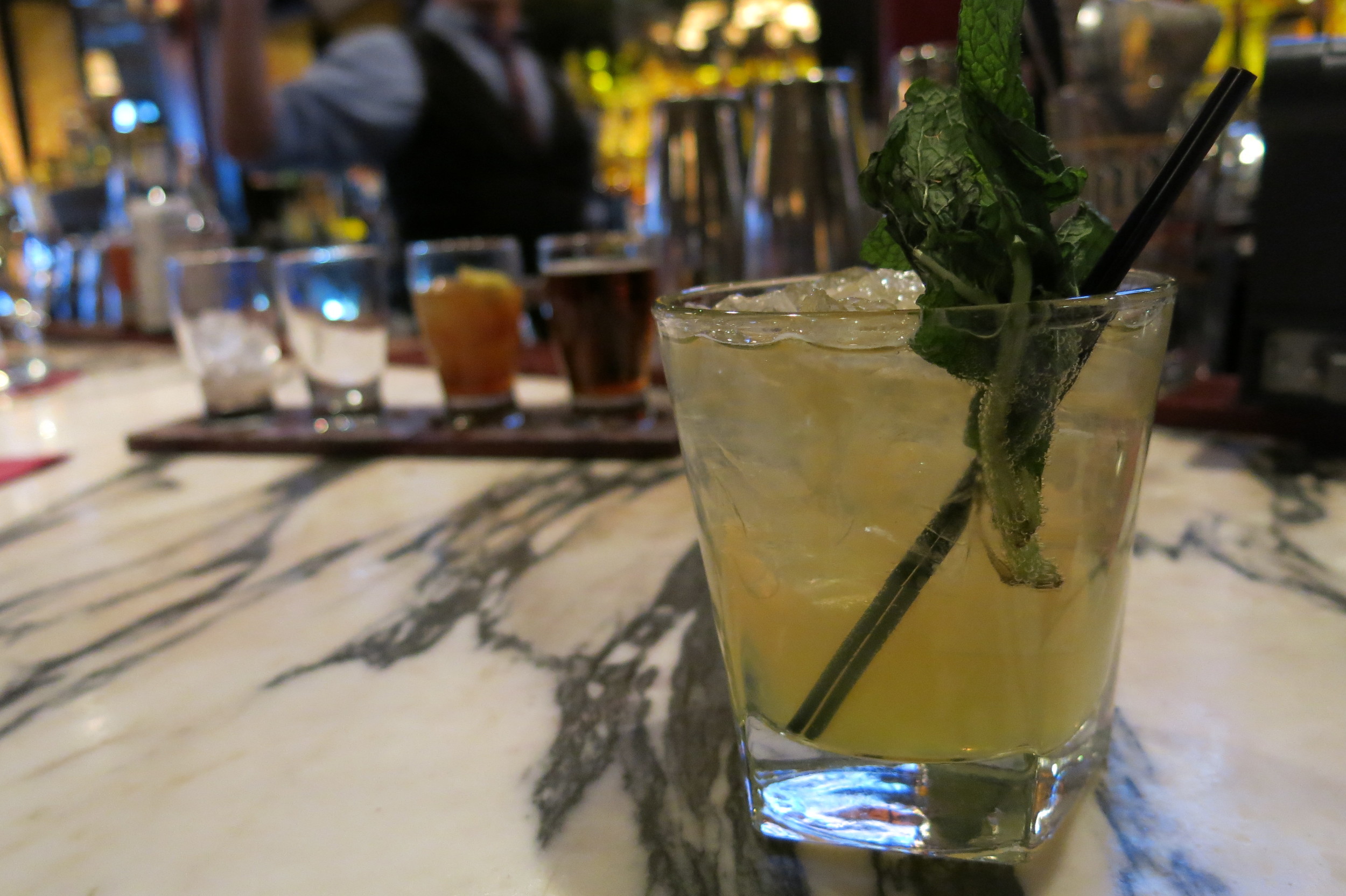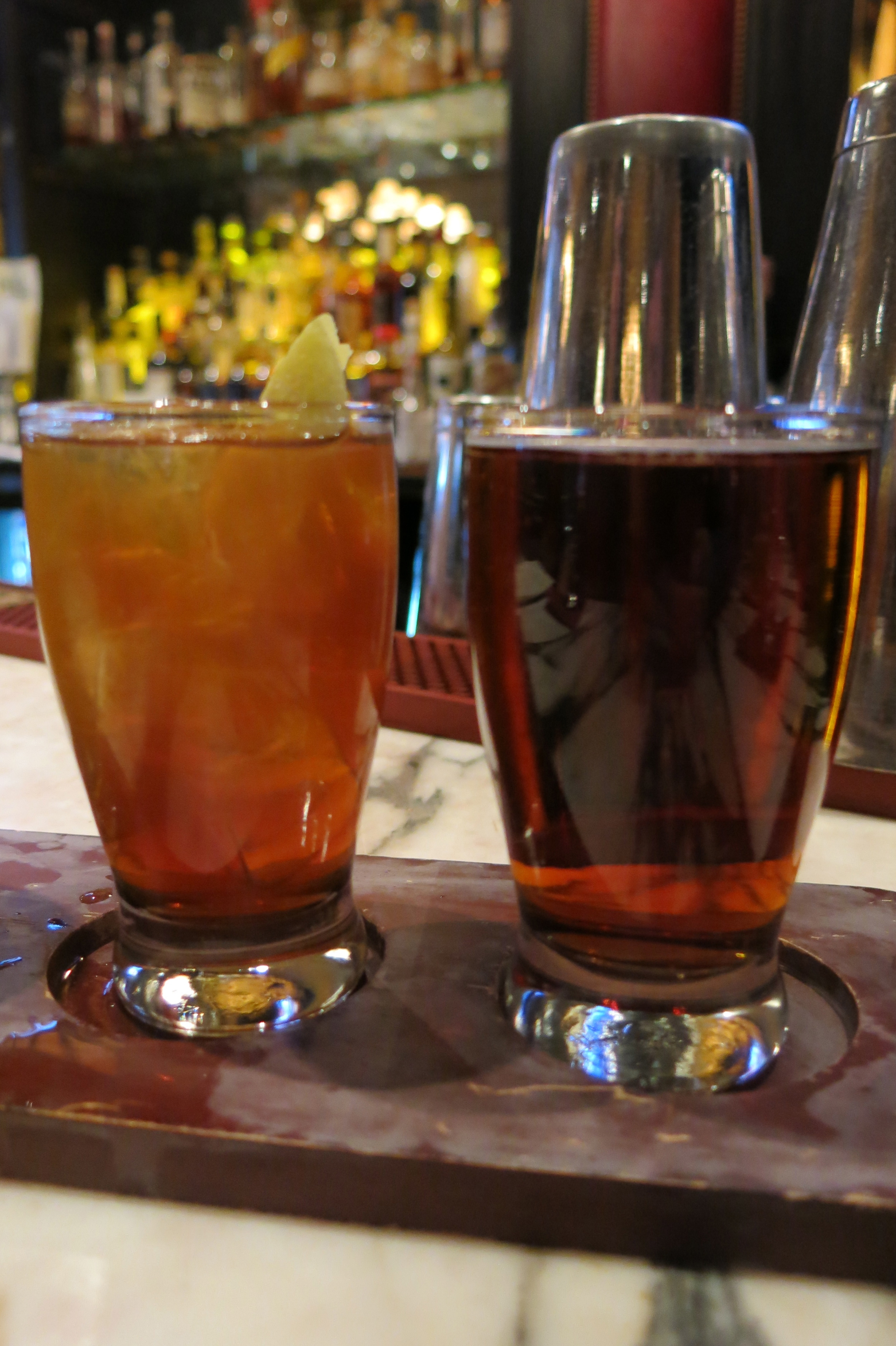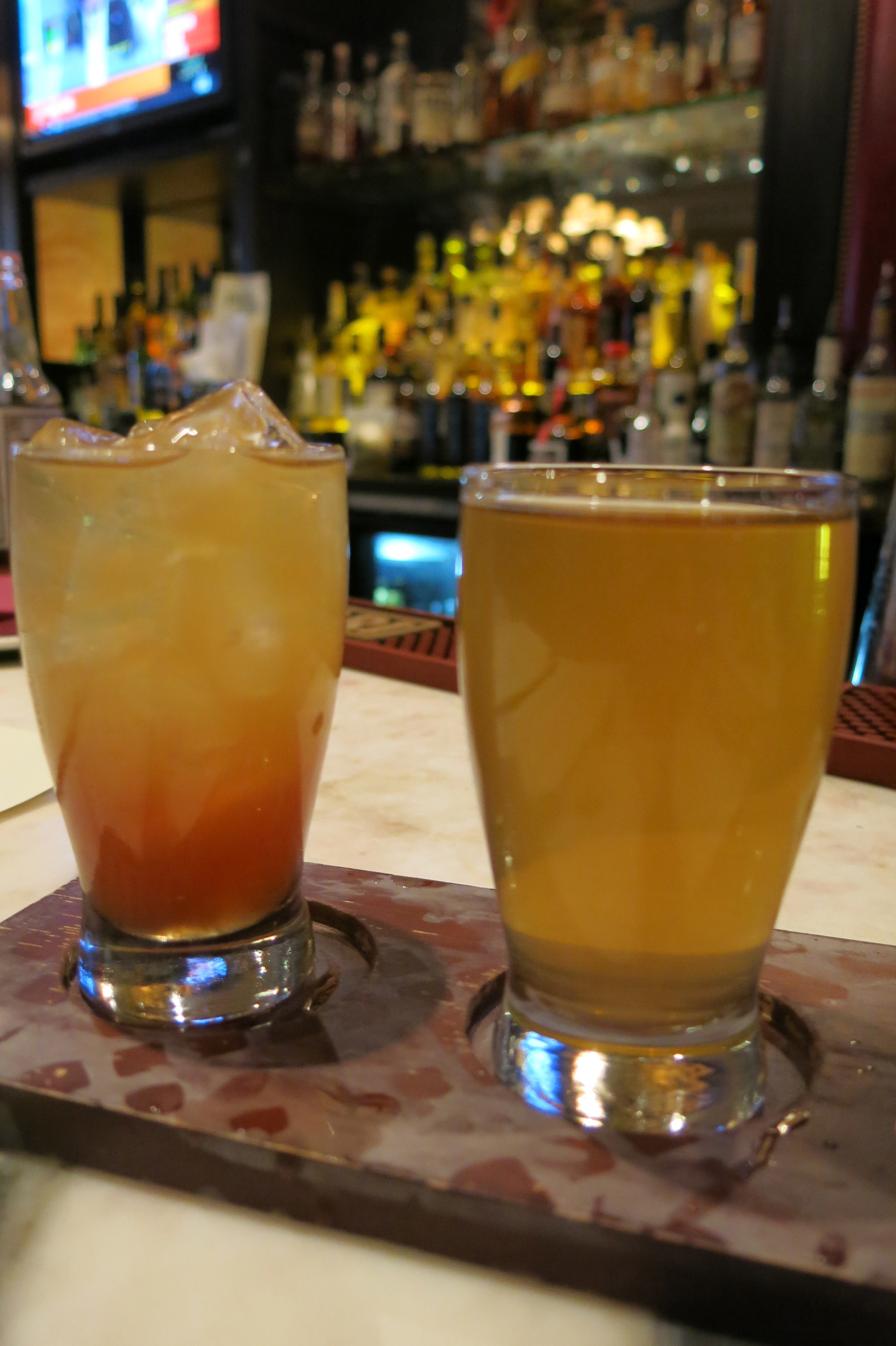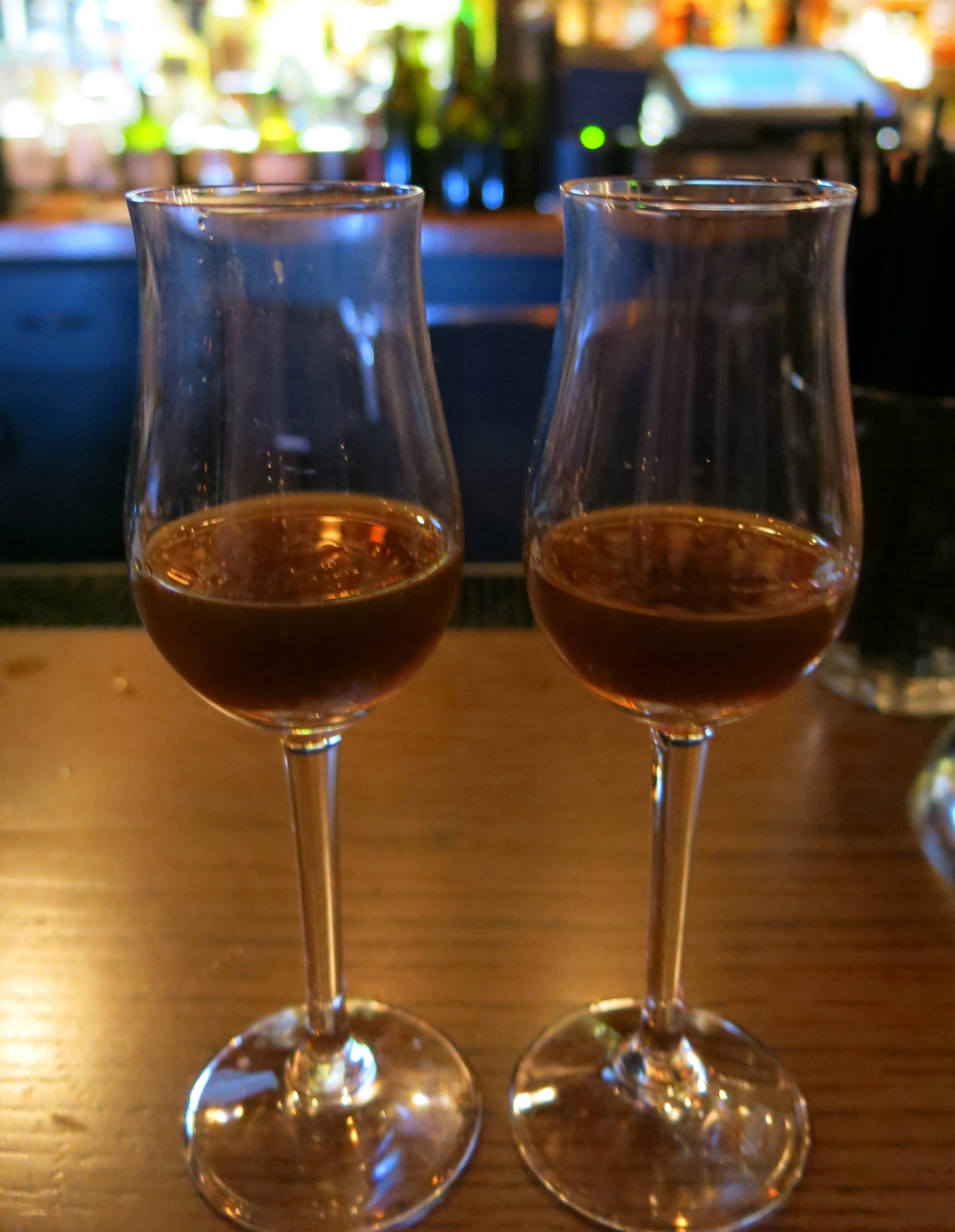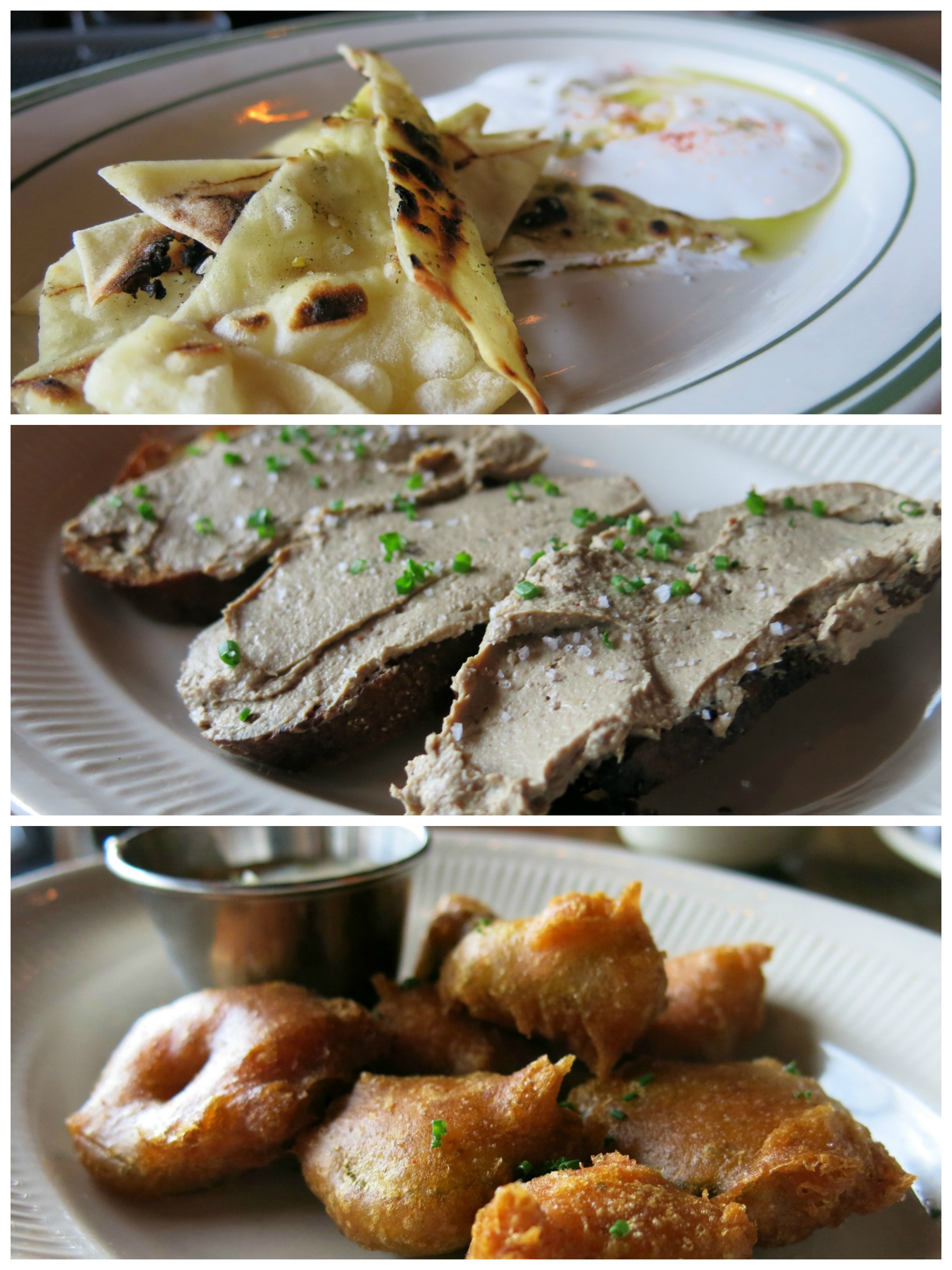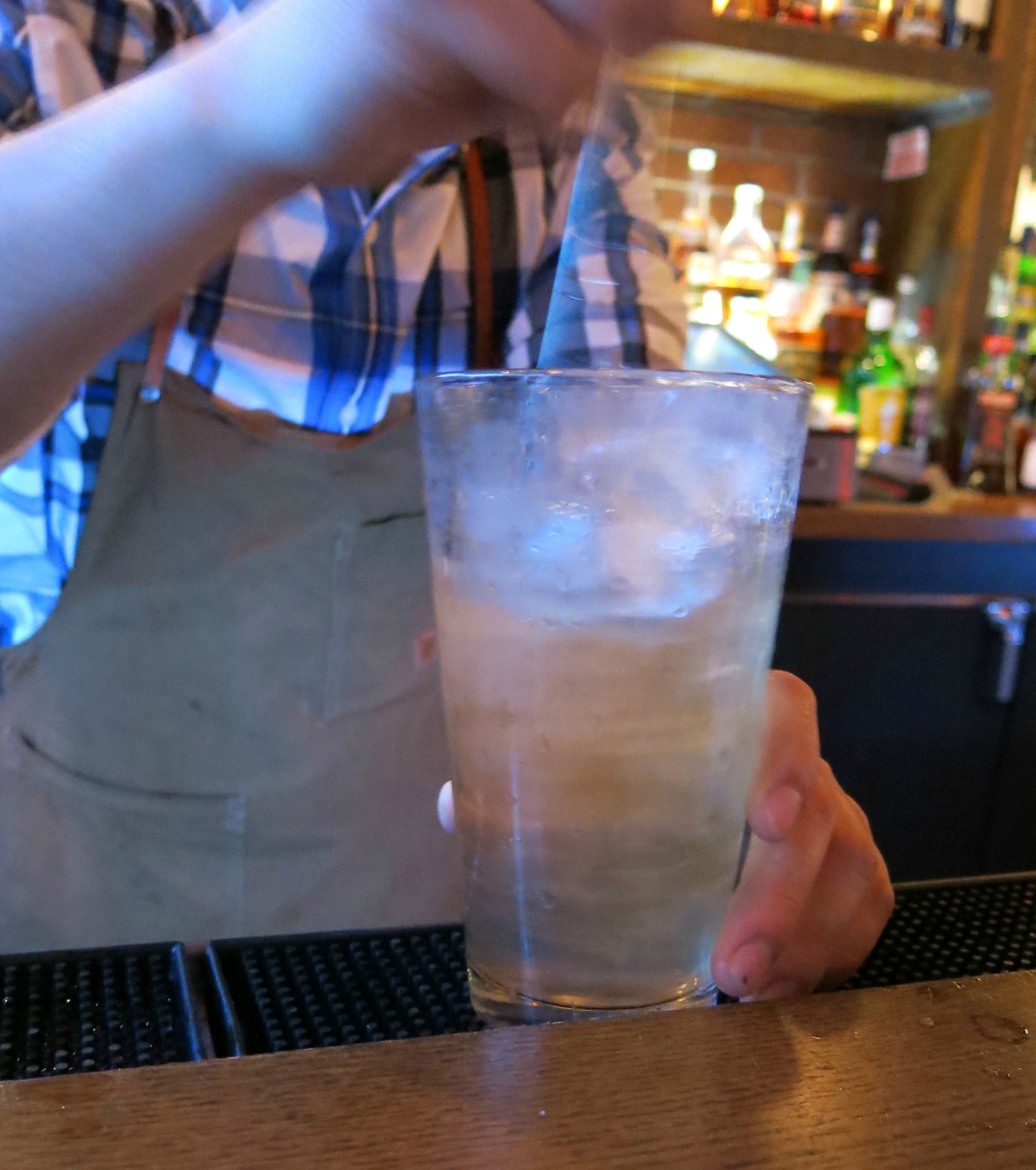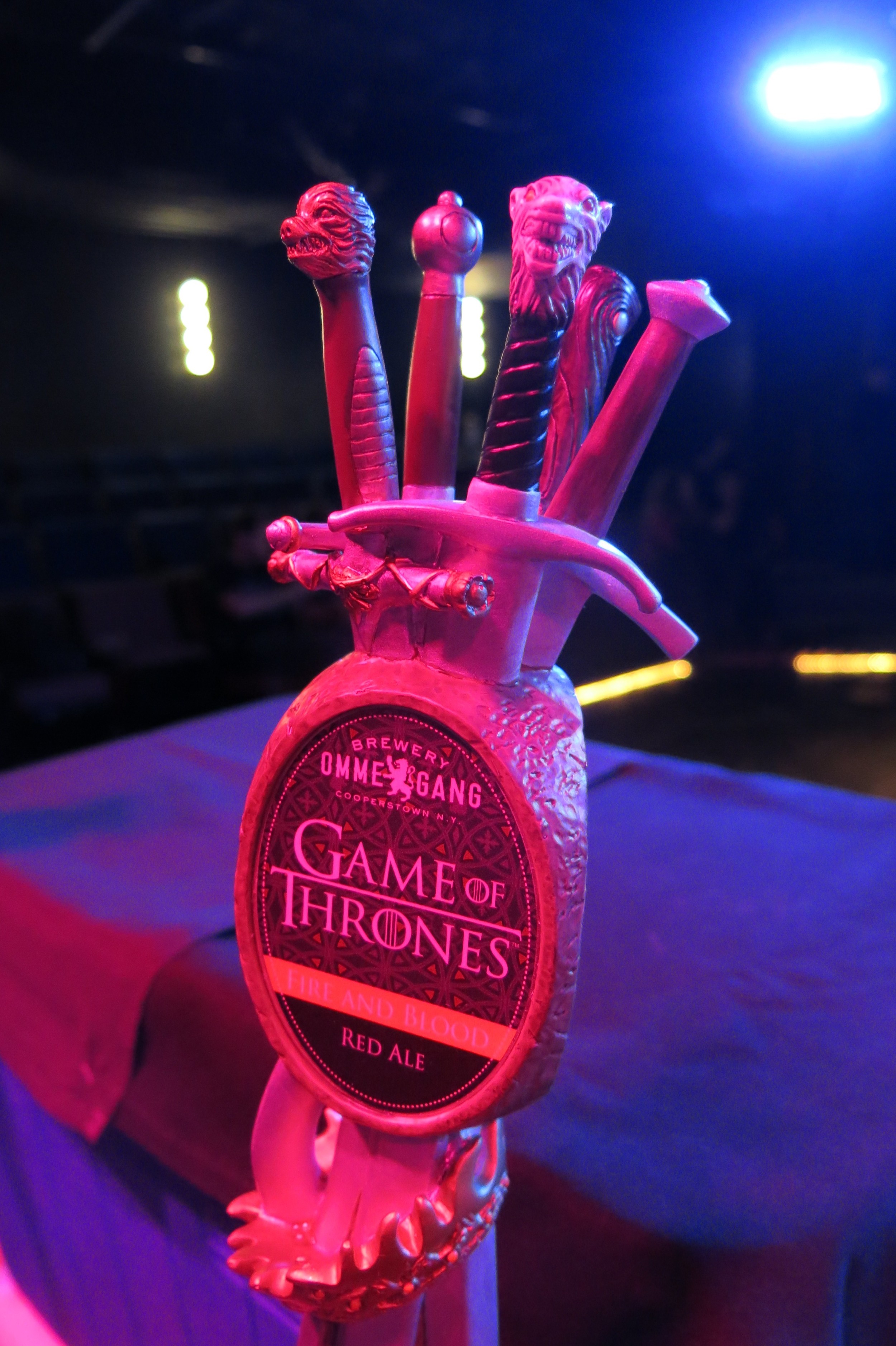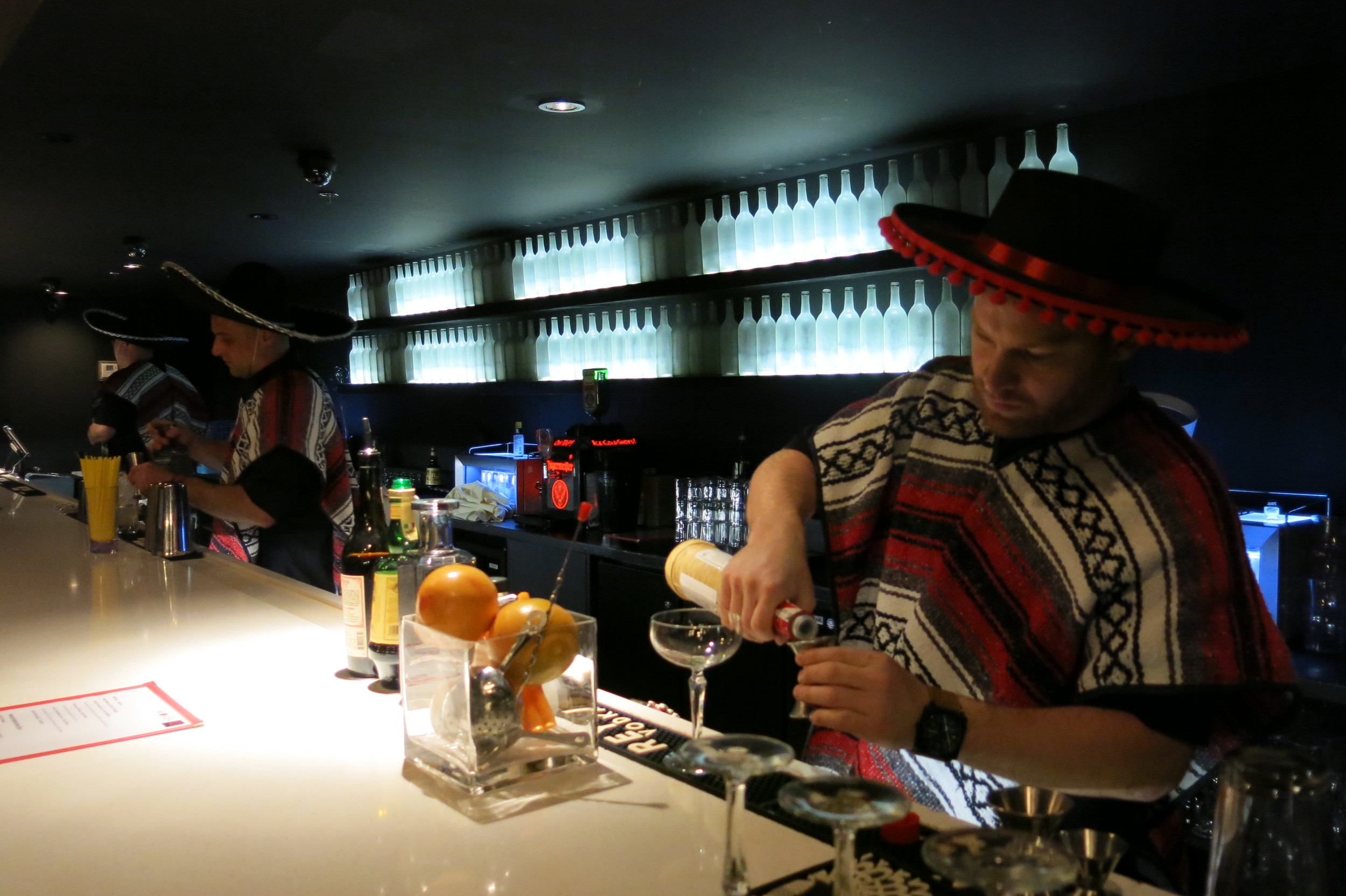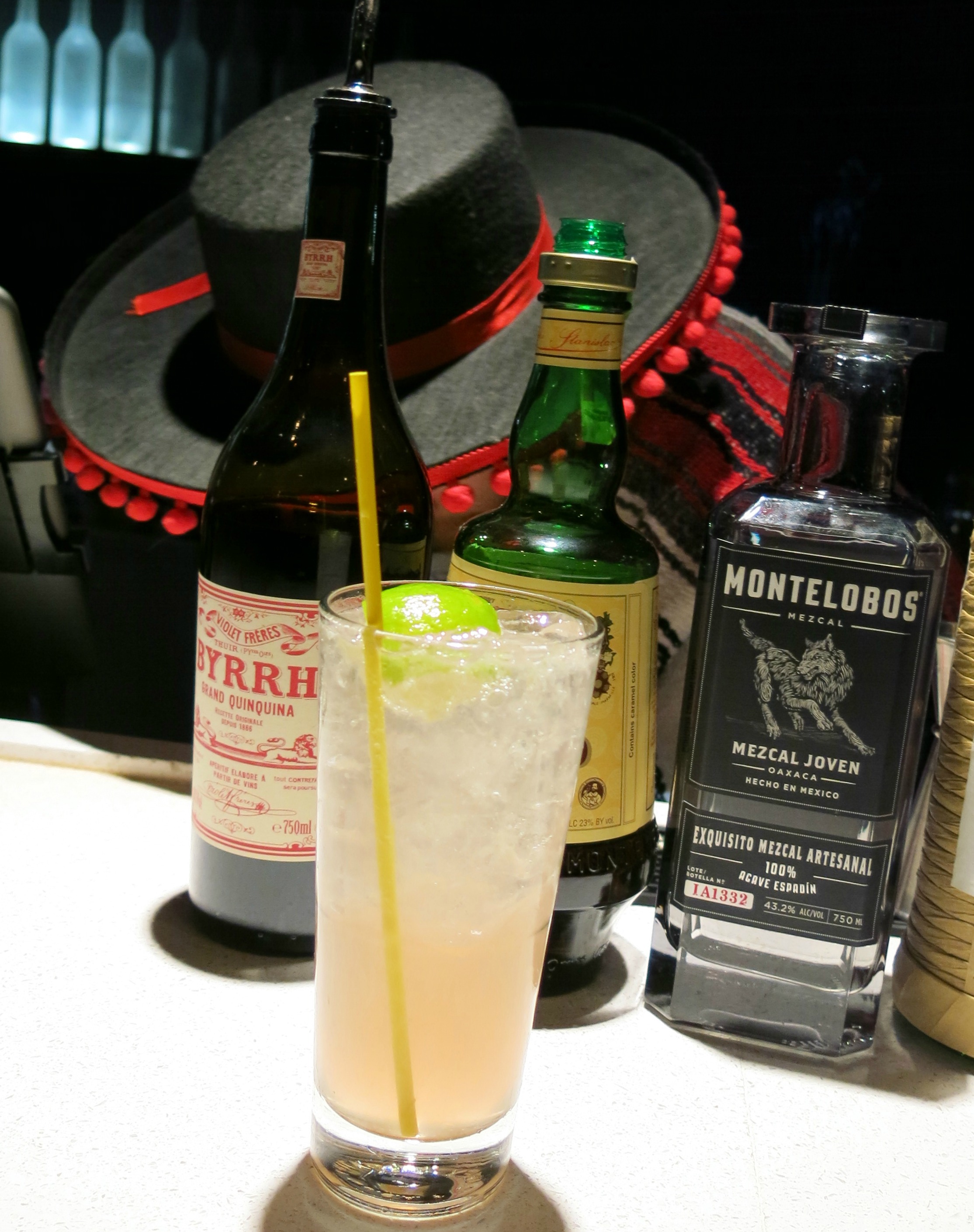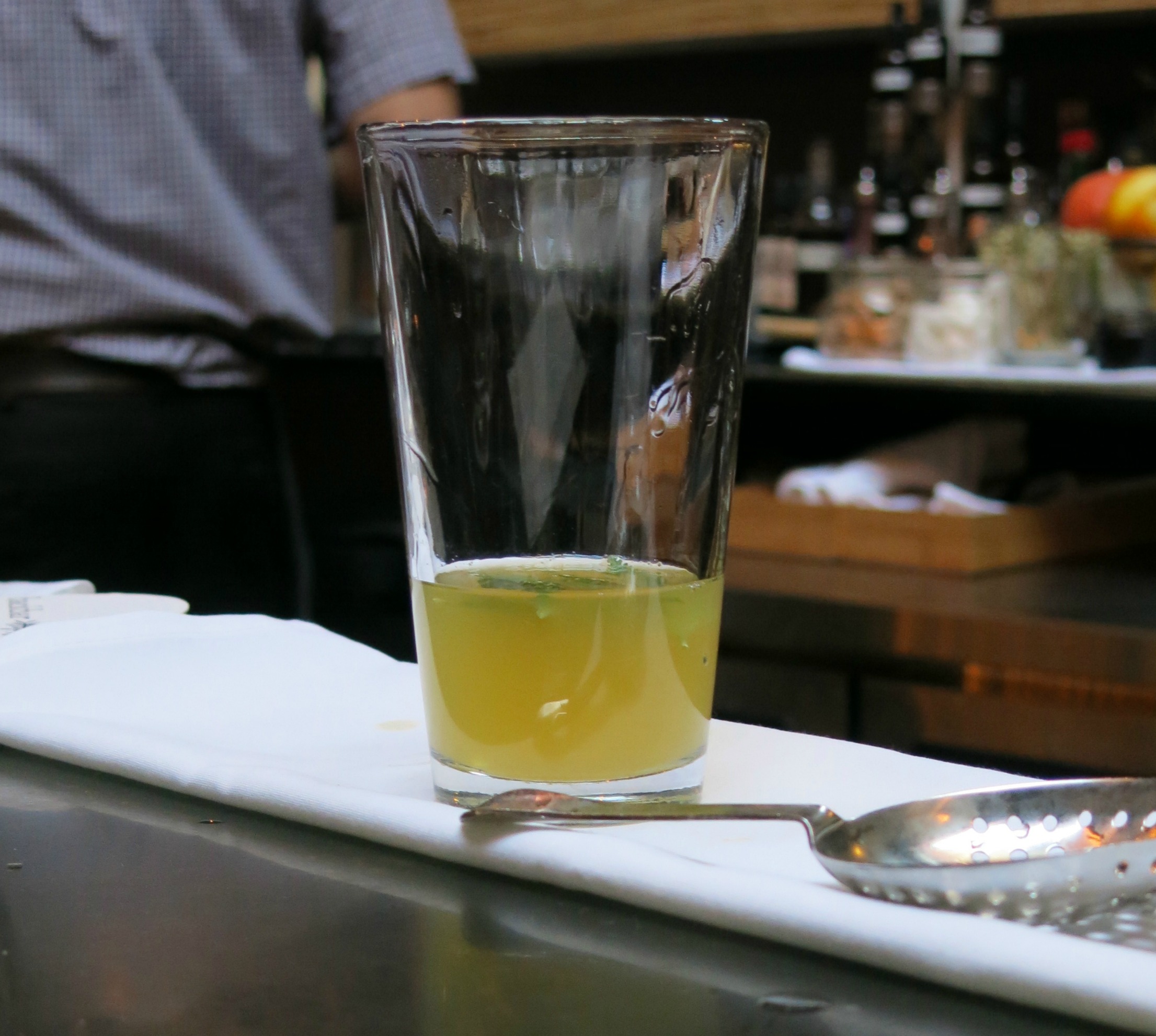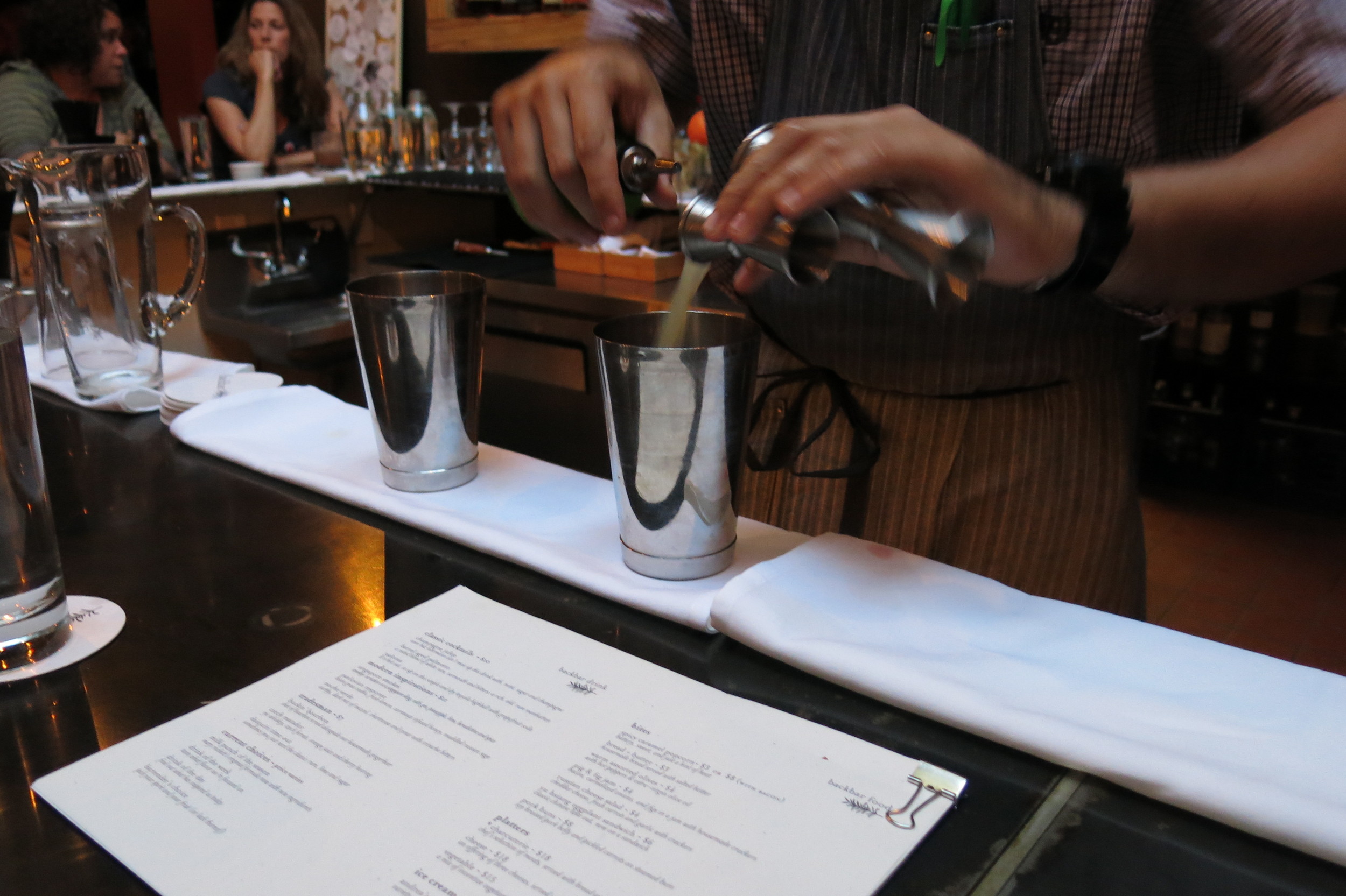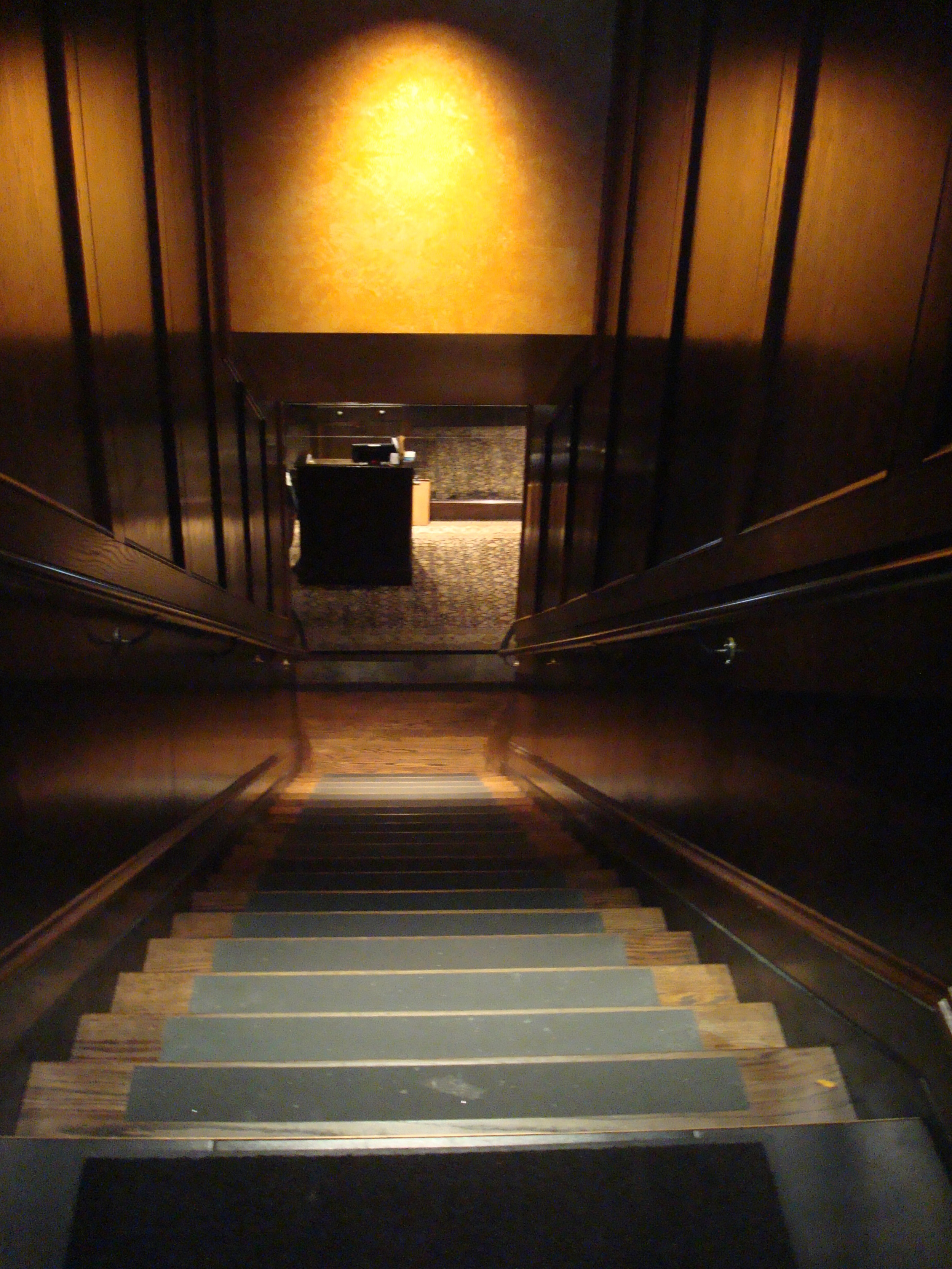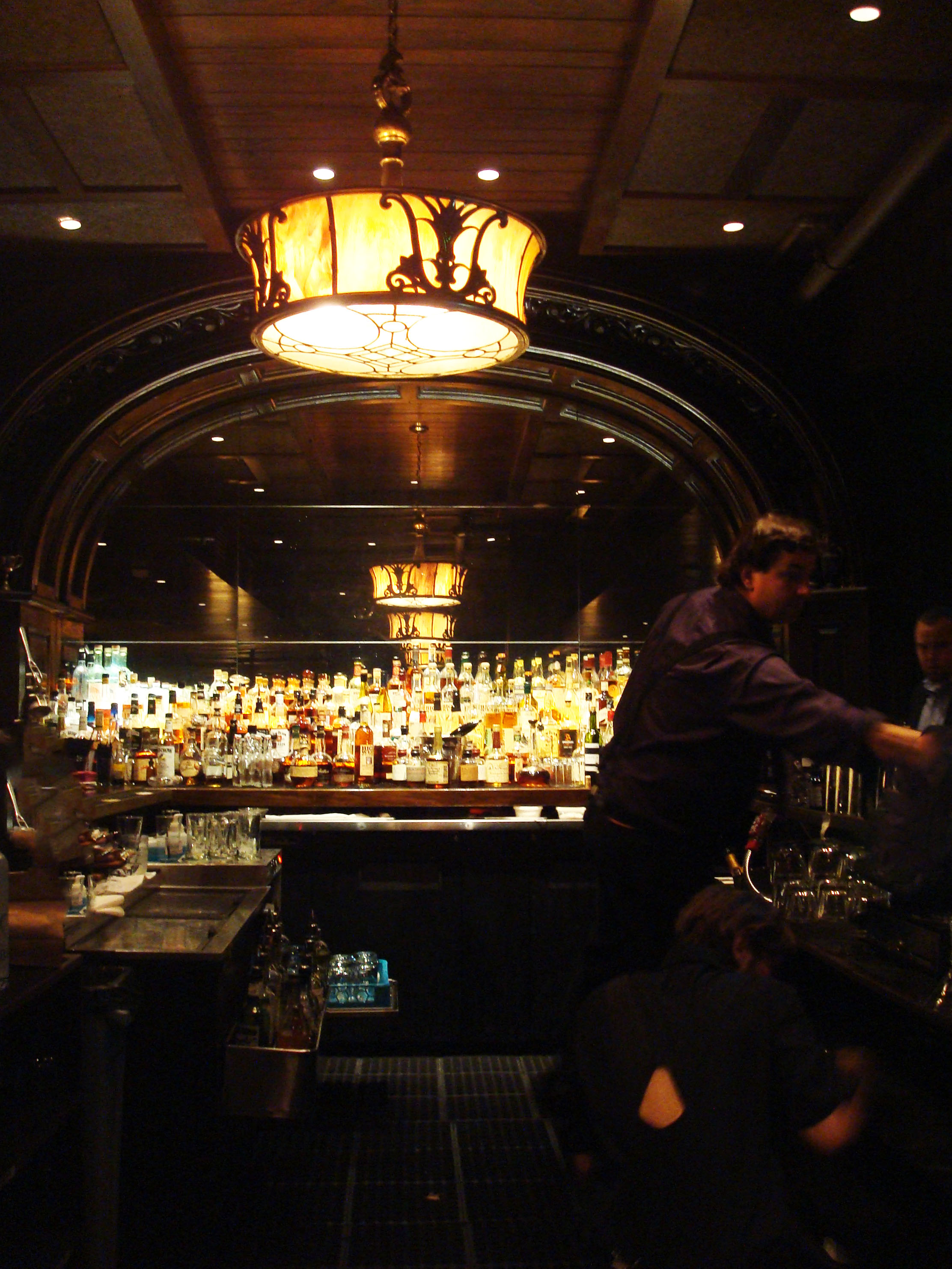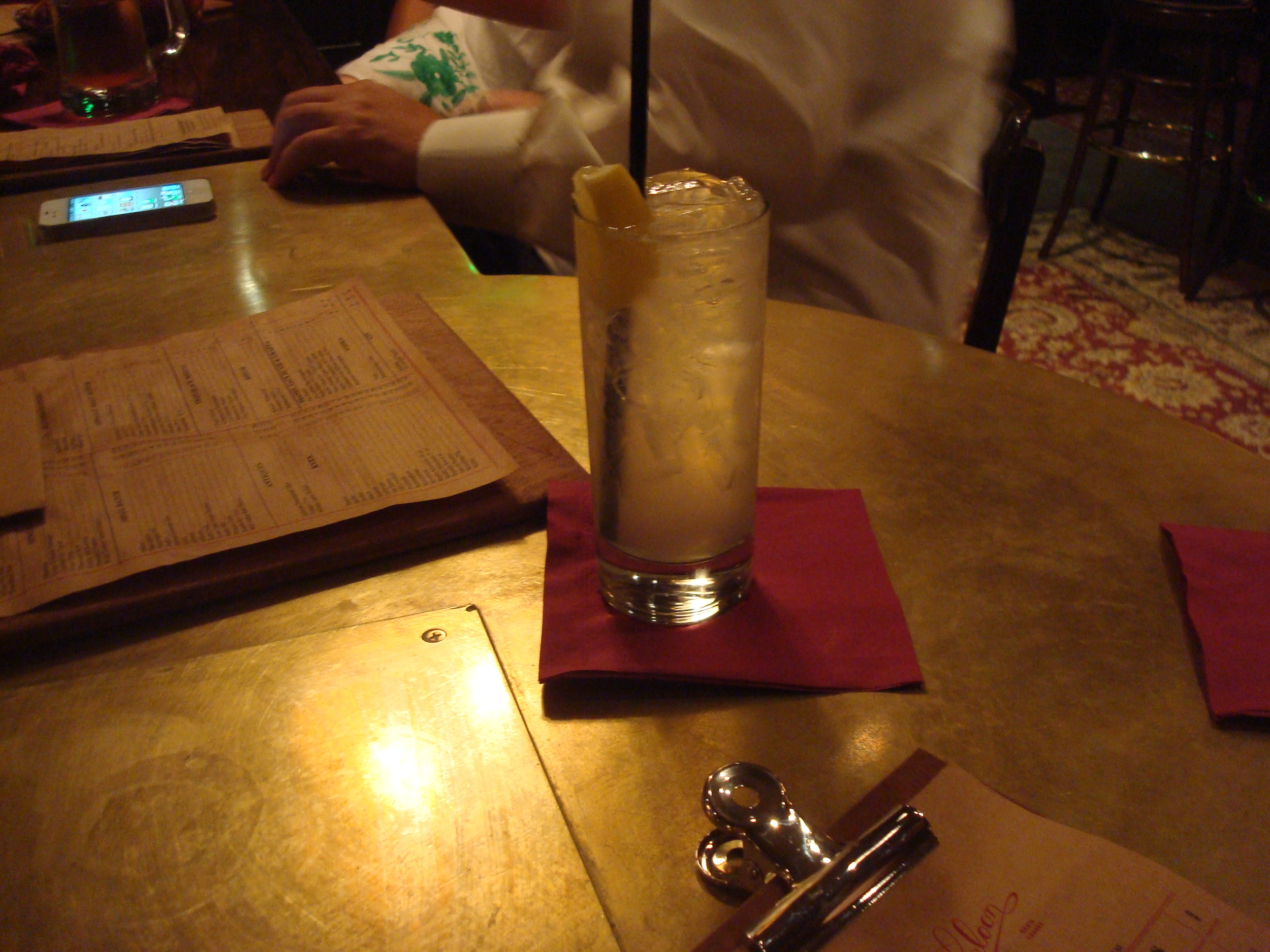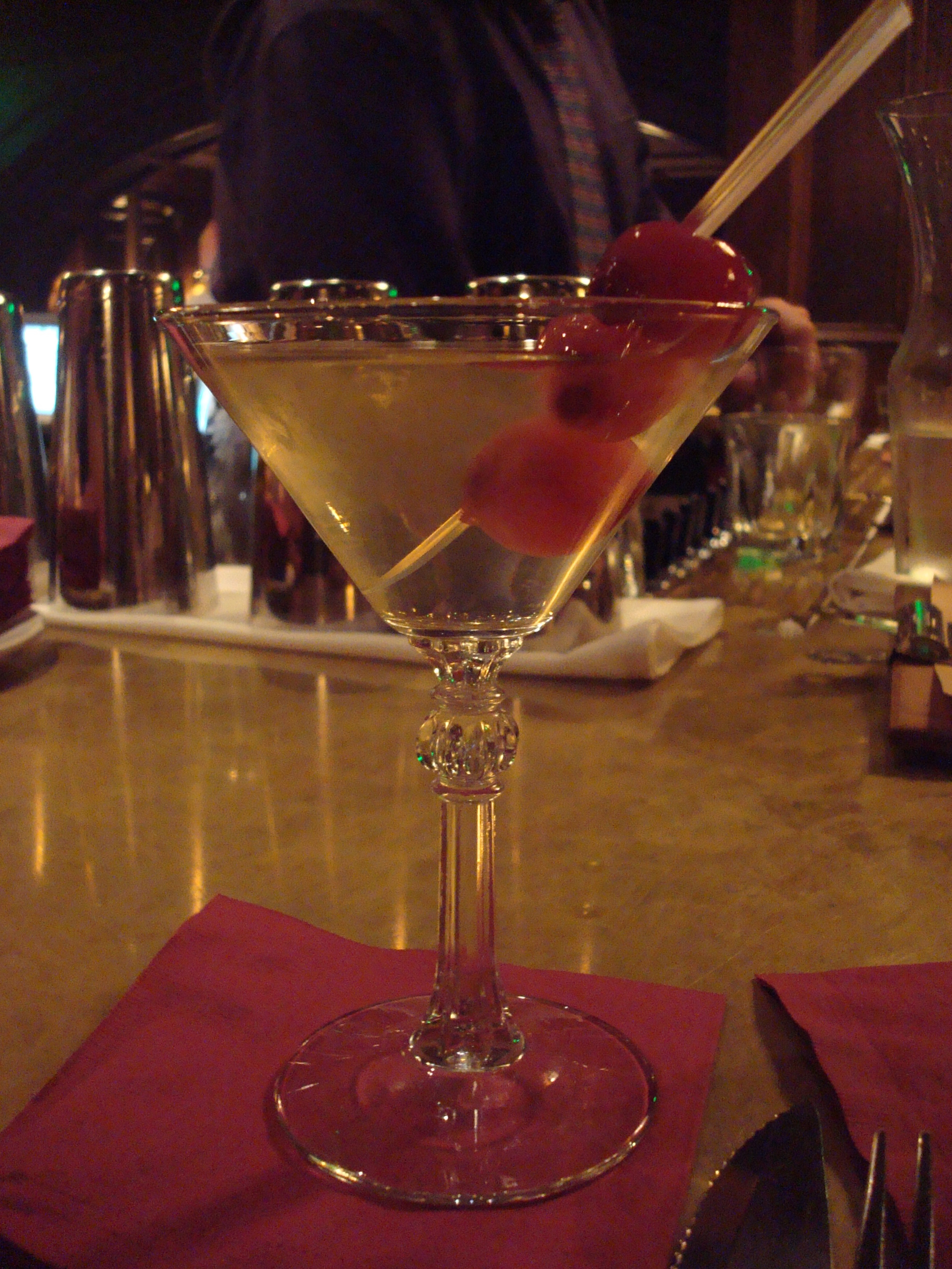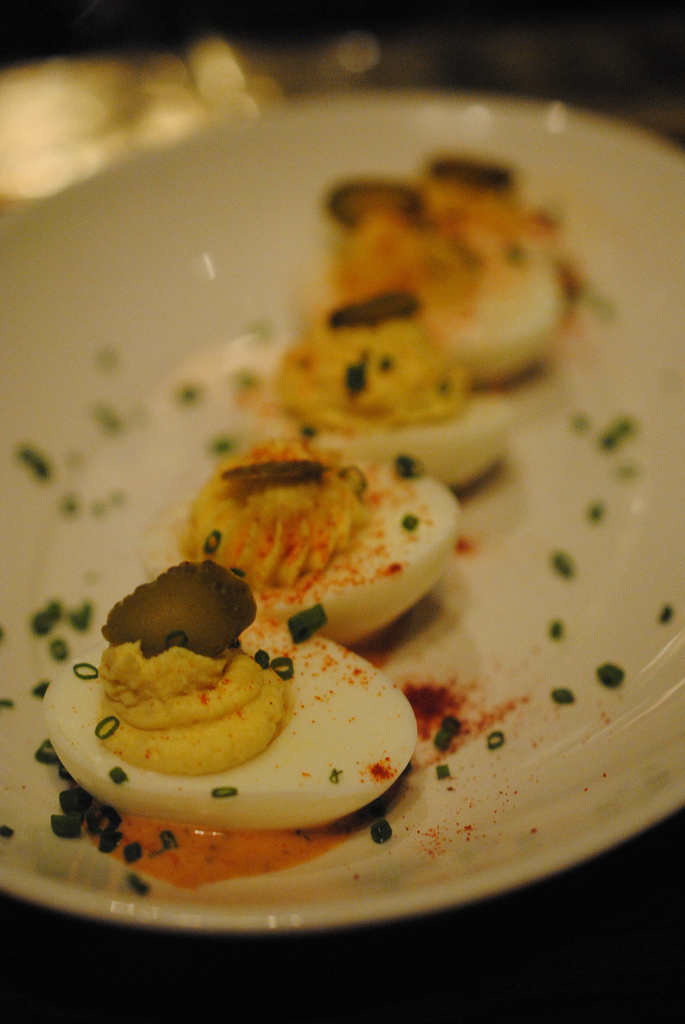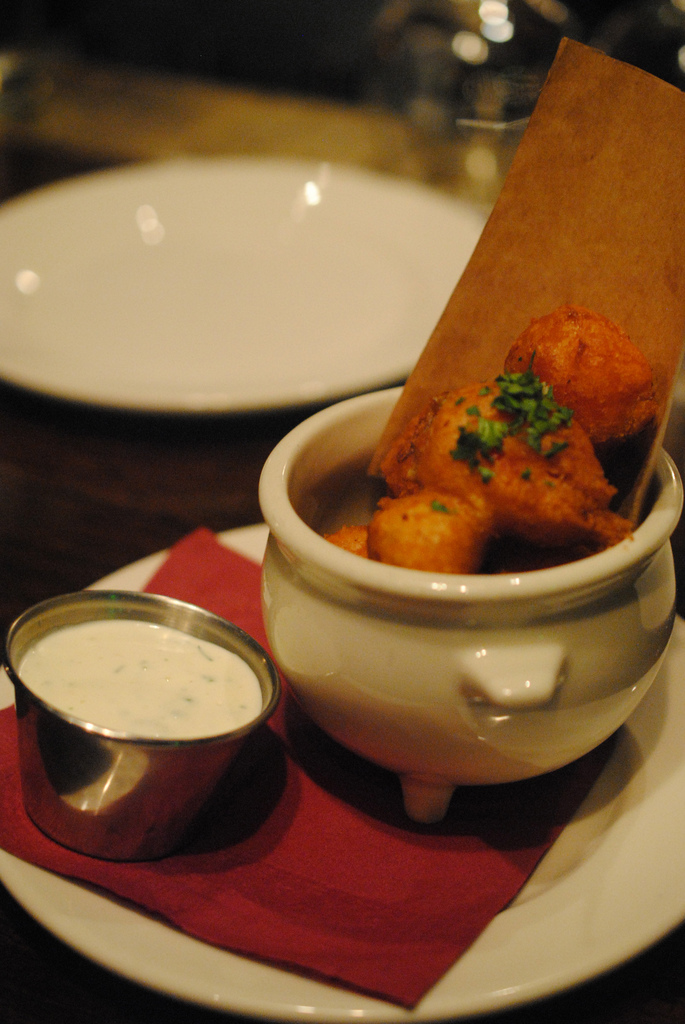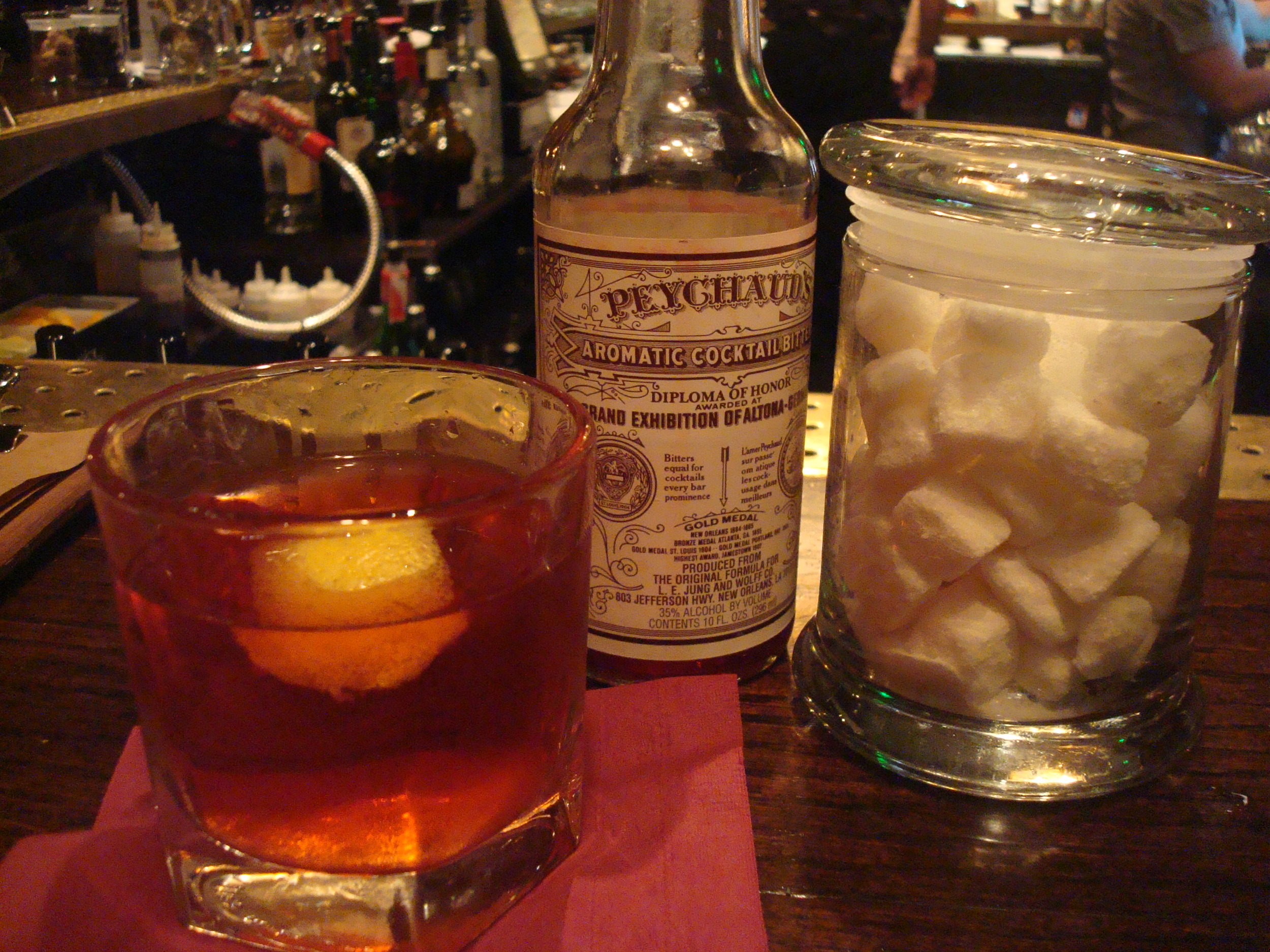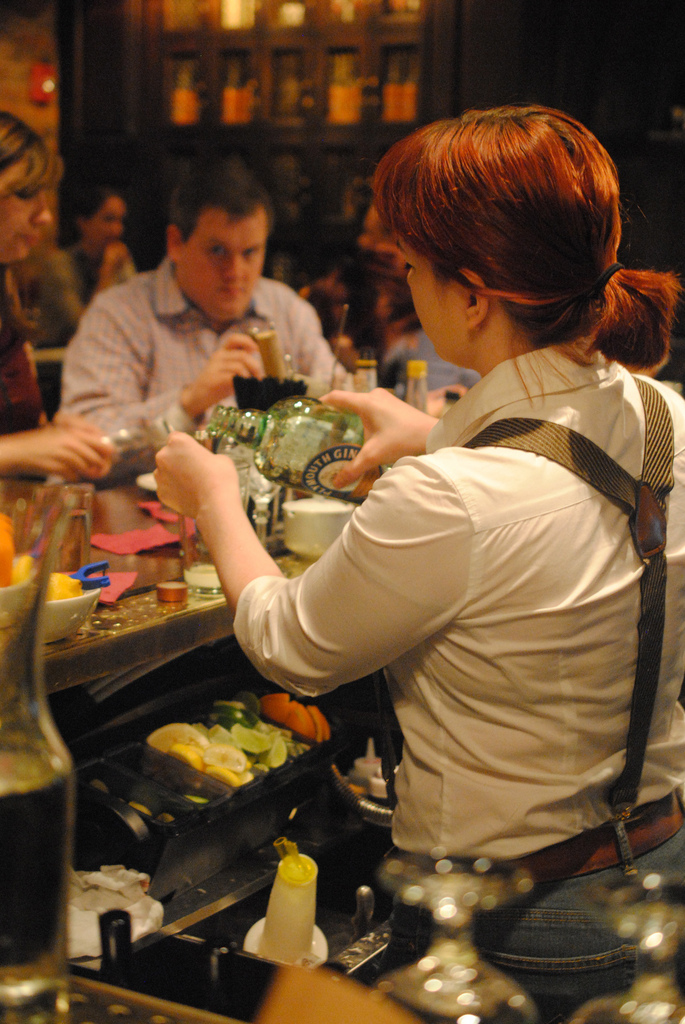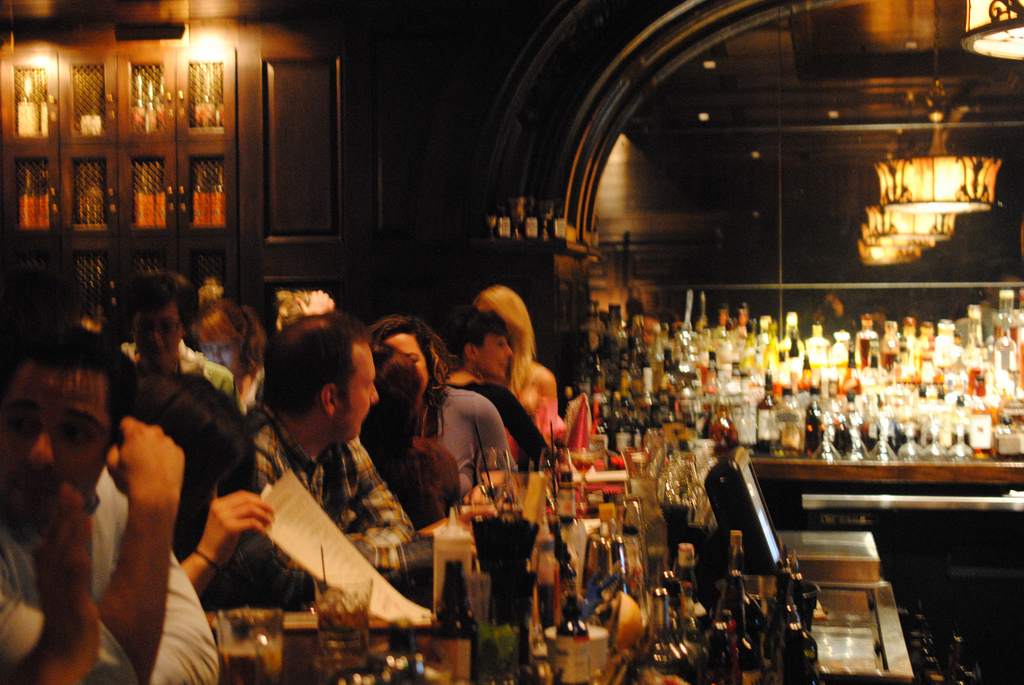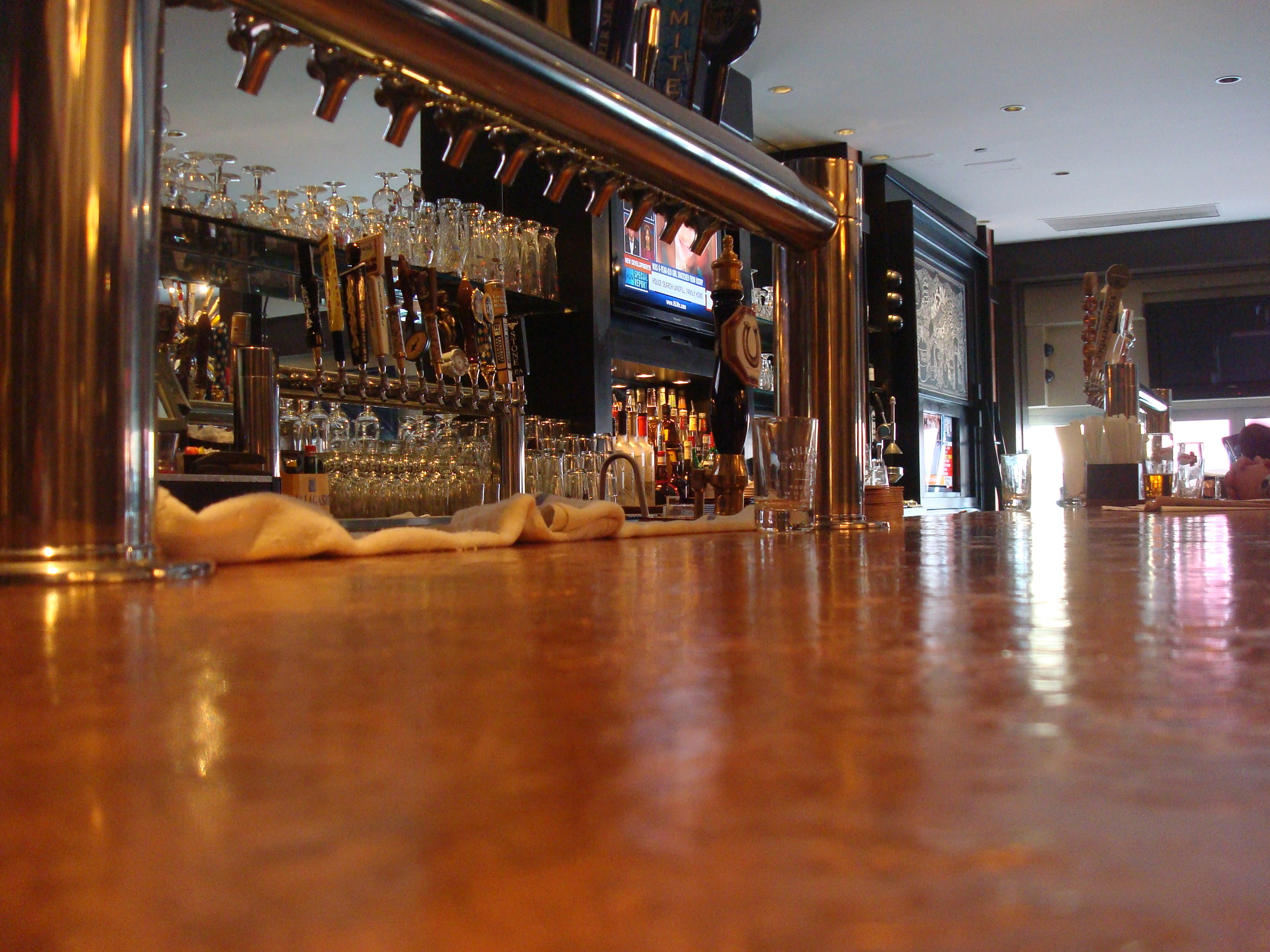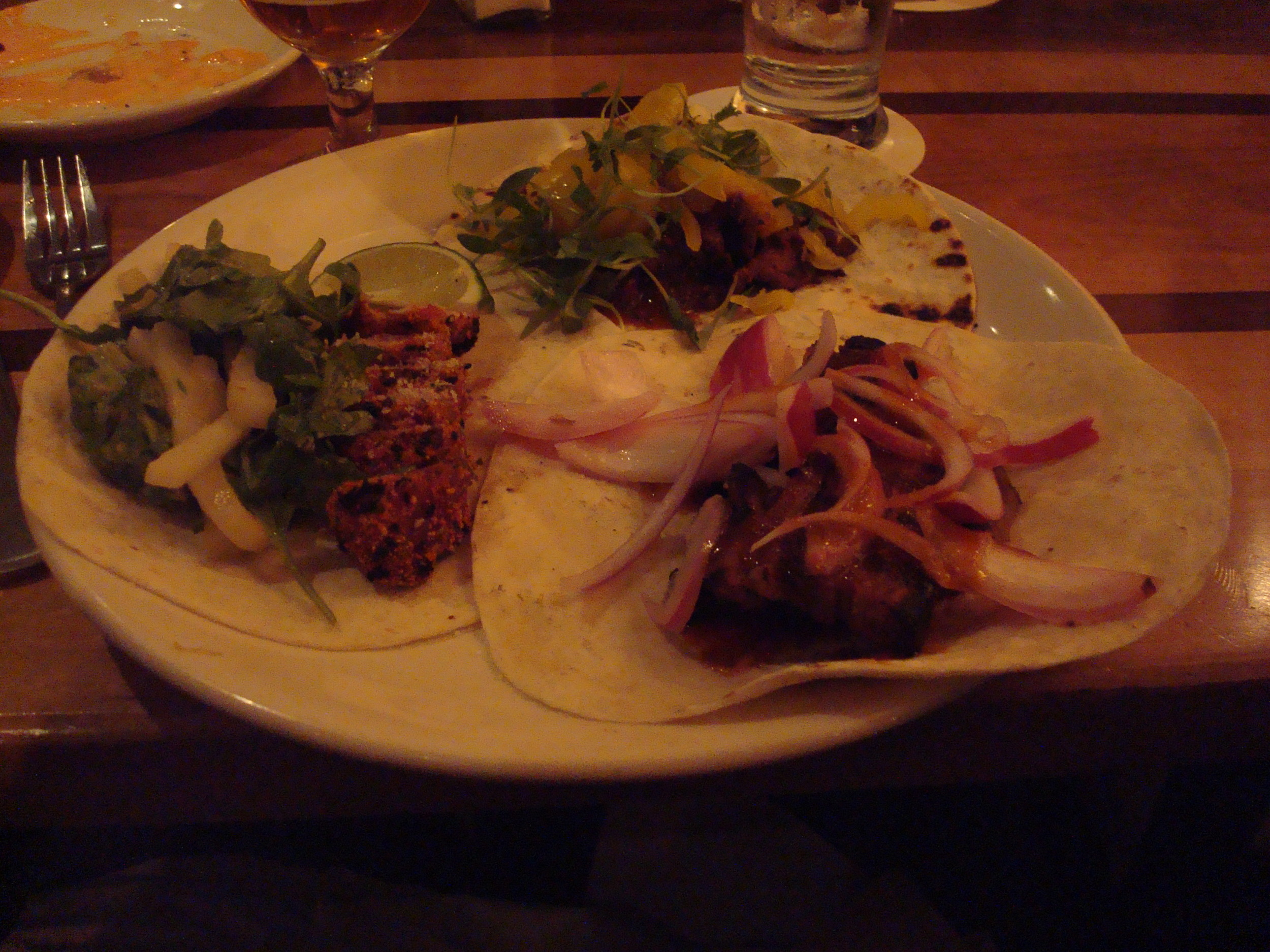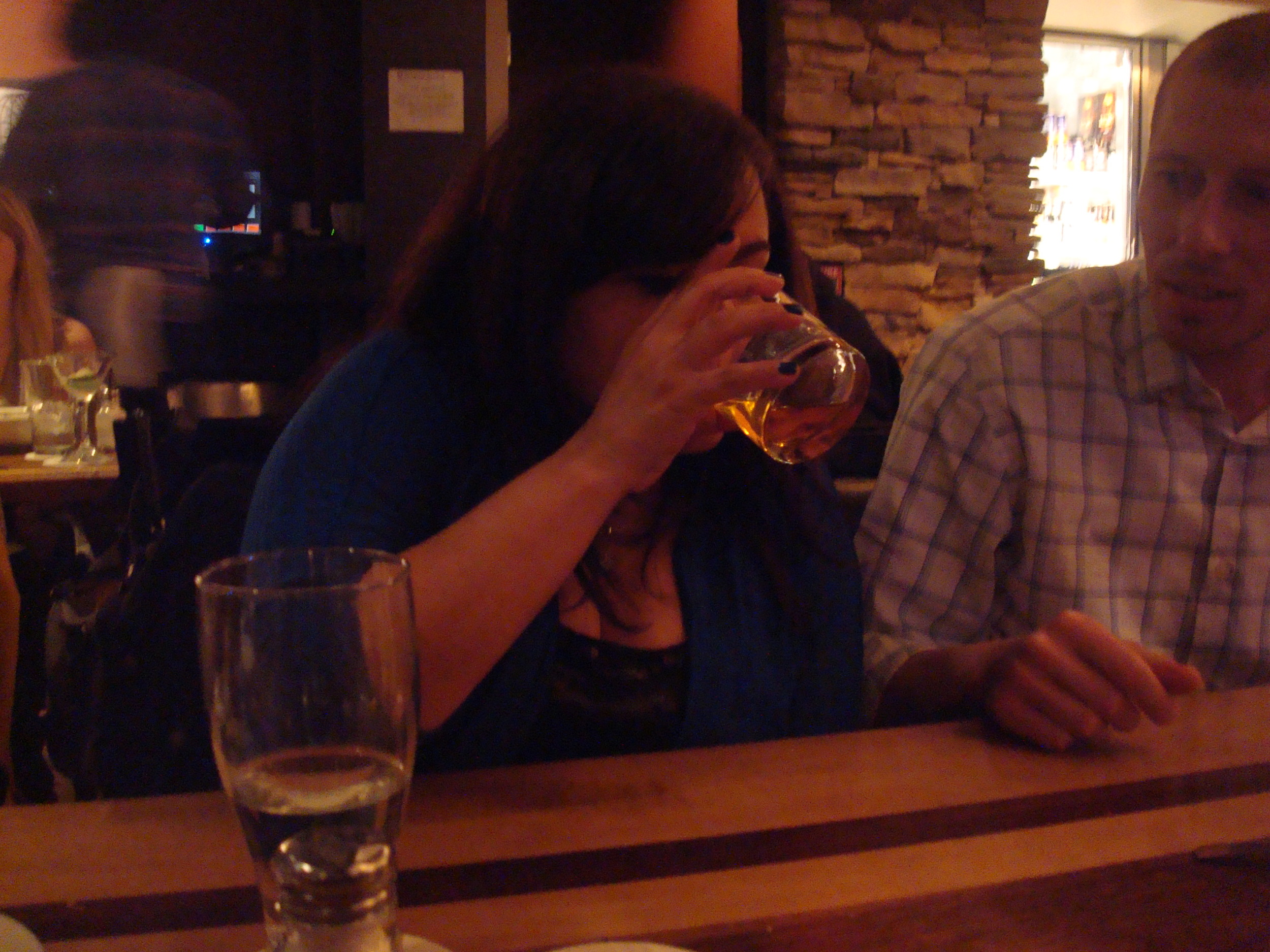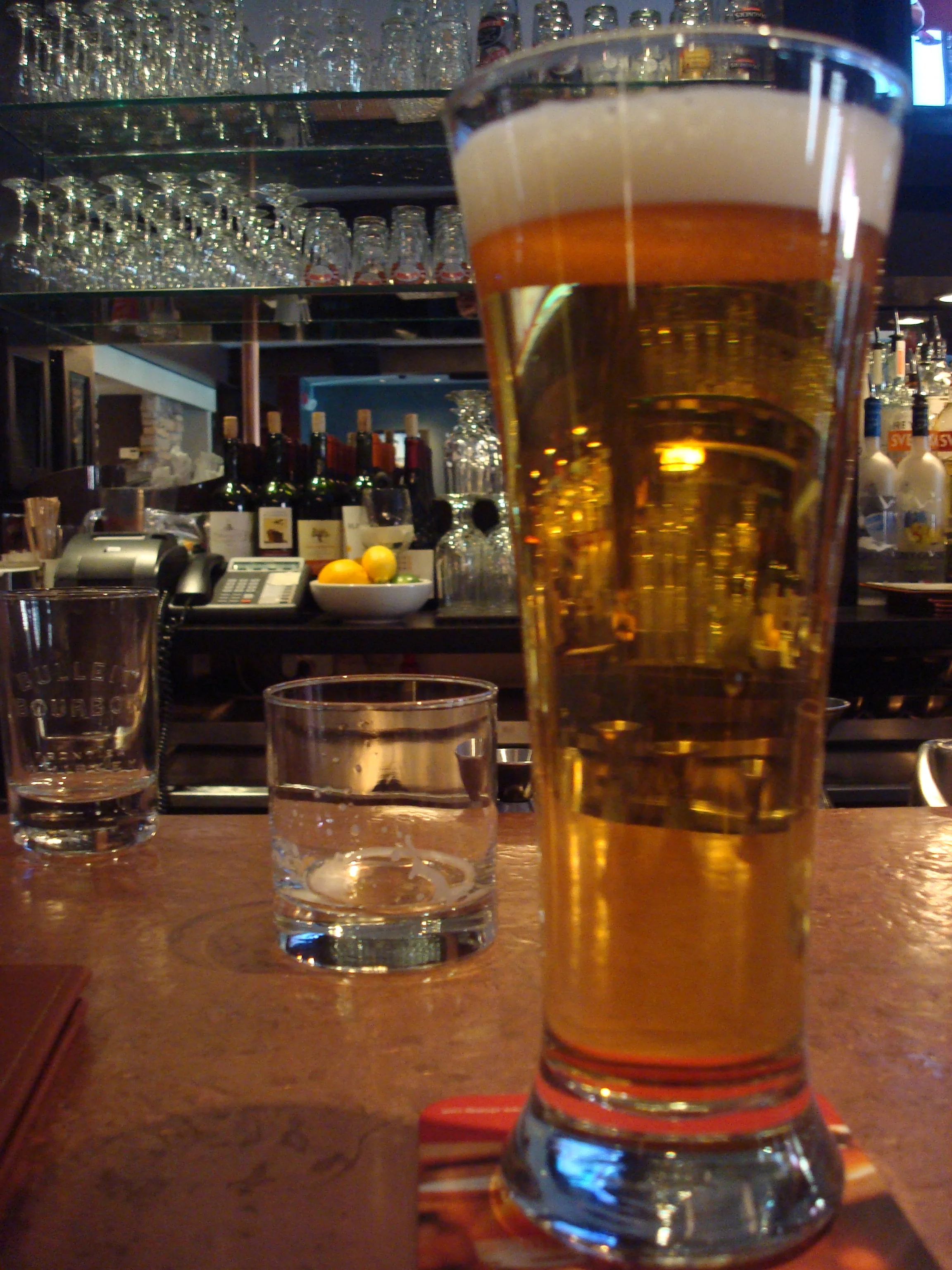Glendalough Whiskey Dinner at Brass Union
Gaining a foothold in the spirits industry is challenging under any circumstances. But when you make Irish whiskey and operate in the shadow of a market-dominating behemoth like Jameson, even getting people to know your brand name can be a tall order.
That’s one reason why it’s easy to root for Glendalough Distillery. Founded in 2011 by five friends from Dublin and Wicklow, the microdistillery opened its doors right around the time that the last independent distillery in Ireland was sold to a multinational corporation.
That makes Glendalough the first modern craft distillery in the Emerald Isle – a fairly remarkable claim in a country with a centuries-long history of distillation.
I first became familiar with Glendalough’s spirits earlier this year, when I met co-owner and brand manager Donal O’Gallachoir. And that’s probably how a lot of people got introduced to Glendalough. You’re unlikely to see a big, glitzy Glendalough ad campaign anytime soon, but you do stand a fair chance of running into the U.S.-based O’Gallachoir somewhere around town.
Donal’s a charismatic chap with an inexhaustible supply of entertaining stories, a passion for Irish whiskey, and great pride in his distillery’s spirits. His enthusiasm is infectious and has likely played no small part in Glendalough’s growing popularity. You can now find it in 14 states and countless Boston-area bars.
Whiskey Pairing
Last week I had a chance to get further acquainted with Glendalough’s spirits during a whiskey dinner at Brass Union in Somerville.
Pairing the distillery’s three whiskey offerings with specially prepared dishes, the event served to showcase not only the spirits but also the cocktail and culinary acumen of Brass Union beverage director Paulo Pereira and chef Jonathan Kopacz, respectively.
We’ll take it one course at a time.
Amuse
“We’re trying to bring fun back to the spirit of distillation,” Donal said at one point during the evening. While he was talking about the booze production process, it’s a sentiment that could have applied to the dinner itself. And nowhere was that more evident than in the “amuse” course.
The proceedings began with Glendalough Double Barrel Punch, made with Glendalough’s signature whiskey, a mix of orange, lemon, and pineapple juices, and sparkling water. Refreshing and effervescent, with a pleasant aroma from a mint leaf, it was well suited to the unusually warm fall evening.
Paired with the punch was whiskey caramel corn, a sweet, crunchy treat that incorporated Glendalough’s whiskey into the gooey coating.
I’d say this was a pretty clever way to start the evening. A whiskey and food pairing might seem like a serious affair, the sort of thing attended by whiskey snobs and highbrow foodies. But opening with popcorn and punch established a playful tone, encouraging guests to focus as much on enjoying themselves and sharing the experience as on appreciating the complexity and flavor interactions of the food and spirits.
First Course
The first course was a dish of roasted peaches served with goat cheese and a savory honey. Combining sweet, savory, and tangy flavors on one plate, it was light and beautifully presented.
Accompanying the peaches was one of the evening’s first surprises – the premiere of a cocktail that Paulo’s been aging in a rum barrel that was later used for a Jack’s Abby porter. The cocktail, called Lane’s Burrow, was a variation on the classic Irish Tipperary and made with Glendalough’s Double Barrel whiskey, Carpano Antica sweet vermouth, yellow chartreuse, and Bittermens Boston Bittahs (their spelling, not mine).
It was an unusual cocktail – complex and bitter, with notes of licorice in the middle, but smooth as silk and a smart complement to the peach dish.
You may be seeing more of that cocktail, and not just at Brass Union. Paulo bought the barrel from Donal, but since it was much larger than what he’d ordinarily use for aging a cocktail, he invited several other bars in the same restaurant group to go in on the purchase. The Lane’s Burrow will be aged a little longer, but should be available later this fall.
Second Course
Having never had quail (aside from their eggs), I was excited about the second course. Served with radicchio and cherry mostarda, this grilled bird was delicate but rich, with a crispy skin.
Paired with it was Glendalough’s 7-year, single-malt Irish whiskey. This is a big, rich whiskey with notes of chocolate, butterscotch, cinnamon, and pepper, and those sweet and spicy flavors elevated the flavors on the plate.
Intermezzo
Now what would a proper whiskey tasting be without gin? OK, it’s an unconventional move. But then, the surprise guest of the “intermezzo” course, Glendalough’s Wild Autumn Botanical gin, is an unconventional gin.
Incorporating upwards of 20 wild Irish botanicals and made in collaboration with a local botanist, it has a completely foreign aroma and a complex flavor profile unlike any gin I’ve tasted. Paolo used it in a straightforward cocktail that allowed the botanical blend to shine, mixing it with simple syrup and charred grapefruit (along with a cryptic flavor orb, which I’m at odds to describe).
I love the idea of a seasonal gin, and given New Englanders’ fondness for autumn, this one should win its share of local fans. Unfortunately, it was just a tease; Glendalough’s gins aren’t yet available in the U.S. and won’t reach our shores until next year.
Third Course
It was back to whiskey for the third course. In every respect, Glendalough’s 13-year, single-malt Irish whiskey is the most distinguished of the distillery’s offerings. It took home two awards from this year’s San Francisco World Spirits Competition – Best Single-Malt Irish Whiskey and Best Irish Whiskey. I’d say that puts it in some pretty elite company.
And it’s easy to see why the judges in San Francisco favored it – with notes of vanilla, citrus, spices, and oak, this smooth whiskey is similar to a fine cognac, with a robust mouthfeel and a complex bouquet of flavors.
Served alongside it was braised lamb served with chickpeas, cucumber, mint, shallot, and lemon. Twenty-four hours of braising resulted in meat that was melt-in-your-mouth tender. The soft texture and bold flavor made it the perfect companion to the exceptional whiskey.
Fourth Course
Wrapping things up was a flourless chocolate torte with chocolate cherry mousse. Rich, dense, and decadent, its liquid accompaniment is probably no surprise.
The modern Irish coffee may be most famously associated with San Francisco’s Buena Vista Café, but Ireland is still its ancestral home. For this event, Paulo created a traditional Irish coffee with a Portuguese twist – Glendalough Double Barrel, topped with an Irish whiskey cream and a pinch of spice, and Brandymel, a honey brandy from Portugal, in place of the sugar. The brandy added a more complex dimension than sugar would have, and along with the torte, made for a sweet conclusion to the evening.
One of the things I personally found most interesting about this whole shebang is the ways in which whiskey can interact with food. I usually don’t pair whiskey with anything other than the occasional cigar, and I was impressed with the way in which chef Kopacz matched the nuanced flavors of the whiskey with some pretty creative food choices.
I was also impressed with the versatility of Glendalough’s whiskies, both in the food pairings and in cocktails. Glendalough might not move 5 million cases a year like the aforementioned green-bottled whiskey, but with a few international awards to their credit and a growing product line, it’s a pleasure to watch this small Irish distillery continue to make a name for itself.
And look for a story on Brass Union sometime within the next month or two. I’ve been there twice, but each time has been for a specific event. I can’t wait to sit at the bar sometime and see what else Paulo’s got up his sleeve.
* * * * * * * * * * * * *
Copyright © Boston BarHopper. All Rights Reserved.
Farmed & Fizzed – Exploring Beer Cocktails With Peak Organic
Experimentation has always been in Peak Organic’s DNA. The urge to continuously tinker with recipes is what led home brewer Jon Cadoux, back in the 1990s, to discover that his best beers were those made with organic ingredients. In 2005 he opened the Peak Organic Brewing Company in Portland, Maine, and that same spirit of exploration has resulted in the production of 20 unique beers, all of which use locally sourced, organic ingredients to the extent possible. Jon’s love of craft beer, passion for sustainability, and determination to remain innovative merged with Boston cocktail culture last Thursday at “Farmed & Fizzed,” an event hosted by Somerville’s Foundry on Elm and featuring cocktails made with Peak Organic beer. I spoke with Peak Organic’s Director Communications, Brendan Gangl, who explained that the brewery sent Foundry a bunch of ingredients they use in their beers, like hops, espresso, cacao nibs, and ginger. They challenged the bar to create cocktails using Peak brews and the locally grown products that distinguish the brewery’s beers.
Four Peak beers got the cocktail treatment, and they were available in full-size version or in flights composed of two cocktail samples served alongside the beers that featured in the drink.
First up was Fresh Cut, a crisp, dry-hopped pilsner made with three types of hops. True to its name, it summons all the freshness of a newly mown lawn on a warm, spring day. In the Fresh Cut cocktail, the beer combined with GrandTen Distilling’s Angelica liqueur, yellow chartreuse, dry-hopped simple syrup, and lemon for a complex but refreshing herbal cocktail. I was expecting something sharp and bitter on account of the hops and chartreuse, but the flavors were surprisingly soft and well balanced. Mixing it with the GTD Angelica was smart; the aromatics and botanicals in the liqueur complemented the hoppiness and the herbal elements of the chartreuse.
If the Fresh Cut cocktail captured the essence of a spring afternoon, the Summer Session cocktail was all about summer. Summer Session is a dry, citrusy wheat beer, and its namesake cocktail featured Ford’s gin, Orleans bitters, Cynar, and lemon. The result was a bright and crisp drink with a blend of herbal and citrus notes.
“I was curious if maybe the flavors of the lighter-bodied Summer Session and Fresh Cut might get too muddled in cocktail form,” Brendan remarked. “But I thought the bartenders…did a great job accenting the fruit notes in the Fresh Cut and the citrus notes in the Summer.”
On the other end of the spectrum was the Espresso Amber. One of Peak Organic’s boldest beers, this malty, coffee-forward brew was mixed with Vermont’s Silo bourbon, St. George’s NOLA coffee liqueur, and Bittermens bourbon bitters for what seemed like an espresso-infused Manhattan. “It was almost as if we had taken our Espresso Amber and aged it in bourbon barrels,” Brendan said, clearly impressed with the cocktail. “It was just a touch and the right amount of heat to bring all the flavors together.”
Rounding out the evening’s selections was the Ginger Saison cocktail. Peak’s Ginger Saison is a vibrant beer, with clear notes of spicy ginger and the unmistakable flavor of Belgian yeast. In the cocktail version it combined with Riverboat rye whiskey, raisin syrup, and Meletti amaro. This was a beer-forward cocktail with a prominent ginger flavor, and the raisin syrup gave it a boost of sweetness.
Peak Organic head brewer Jon Cadoux made the drive from Portland to see what Foundry had done with his brews. Admitting that he was beer-focused and not much of a cocktail guy, he seemed genuinely impressed with the variety of spirits behind Foundry’s bar. That makes sense; given the character of Peak’s beers and the brewery’s tendency to experiment with flavor combinations, it’s easy to imagine a brewer’s gears turning at the sight of such a broad toolkit of flavors and styles.
I’ll be honest and say I’ve never been a big fan of beer cocktails. I’ve always found that they taste like two drinks uncomfortably occupying the same glass. The cocktails at Farmed & Fizzed didn’t completely change my mind, but I appreciated Foundry’s focused approach and ability to choose spirits and mixers that complemented the flavors – obvious and subtle alike – in Peak Organic’s brews. And while Farmed & Fizzed was just a one-time event, cocktails that incorporate beer are likely to become increasingly common.
“I think it's certainly something that we'll start seeing more and more as the beverage culture continues to develop,” Brendan said. “People will look for new ways to differentiate themselves, and beer cocktails could very likely be that new genre that people explore.”
* * * * * * * * * * * * *
Copyright © Boston BarHopper. All Rights Reserved.
Kirkland Tap & Trotter
Although I’ve never spoken personally with chef Tony Maws, I imagine that the popularity of his Craigie on Main burger leaves him feeling somewhat amused but mostly annoyed. Maws, of course, is an internationally renowned, award-winning chef, and his Central Square restaurant has earned near-universal acclaim for its highly creative, French-inspired menu and “nose-to-tail” approach to cooking. Maws’ steadfast insistence on using the freshest ingredients, typically from local farms and suppliers, means there’s no fixed menu – nightly offerings are dictated by the availability and acceptability of fresh goods. Such unpredictability requires endless improvisation, and while that might be challenging to staff and even customers, Maws never fails to dazzle. From artistic presentation to impeccable service, Craigie on Main’s reputation for brilliance is richly deserved.
But that damn burger keeps stealing the spotlight. While fairly pedestrian in the context of Maws’ nightly feats of culinary execution, the Craigie burger has achieved its own iconic status and garnered countless accolades from food critics, burger aficionados, bloggers, and customers all over the country.
It’s a telling irony. But the fact is, so much of what makes Craigie on Main exceptional is also what puts it out of reach for the average diner. While Maws is certainly talented enough to cook for anyone, the quintessential Craigie experience calls for an adventurous palate, a high regard for presentation, and a full wallet. Not everyone will find milk-fed pig’s head appetizing or be willing to drop $115 for an 8-course tasting menu. At the risk of stating the obvious, a burger just has broader appeal.
That’s a reality Maws seems to have embraced with his second restaurant – Somerville’s Kirkland Tap & Trotter.
Described as Maws’ idea of a “neighborhood joint,” KT&T’s atmosphere and stripped-down décor quickly establish it as a more casual affair. And as neighborhood joints go, it’s hard to imagine a warmer welcome than the irresistible aroma of wood smoke that emanates from grill in the open kitchen.
Opening last fall in the space once occupied by the Kirkland Café, Maws’ newest venture inherits the charm of that legendary dive bar and consciously maintains its lack of pretension. Walls of exposed brick and unfinished concrete give the space a humble, lived-in quality, while the hardwood floors and exposed ceiling beams contribute to a warm, rustic appearance. Old cabinetry and tables of varying heights, shapes, and sizes result in a simple, improvised look and feel.
And of course, every neighborhood joint needs a good bar. As Maws states on KT&T’s website, he wanted to create “a place where I could hang, and guests can embrace my jeans and a t-shirt philosophy, feeling comfortable enough to eat with their hands and play air drums.” I’ve always been more of an air guitarist, but his point is well taken. While Craigie has its own bar, which boasts an excellent cocktail program, it’s not really conducive to air jamming (drums or otherwise).
At KT&T, a plain, wood-topped bar is surrounded by 12 mismatched stools. Behind the bar, modest wooden shelving holds a broad, top-notch array of liquors. “We try to represent a wide range of spirits,” says Jared Sadoian, Kirkland’s beverage director and former Craigie bartender. ”We try to celebrate local spirits, but even when we can’t, we use craft products, even if they come from halfway around the world.”
It’s an intelligent collection marked by local craft spirits, like GrandTen, and lesser-known liqueurs like genepy. They all find their way onto a drink list characterized by the same principles of innovation and seasonality as the cocktail menu at Craigie, but in a deliberately simpler format, employing minimal ingredients for maximum effect.
Take the Dartmouth. Fresh, light, and mildly herbal, this remarkable cocktail is layered with flavor. With every sip, I found myself contemplating each ingredient and observing how the flavors interacted. Truly a thought-provoking drink. Yet for all its perceived complexity, it’s made with only three ingredients – St. George Terroir gin, orange liqueur, and maple. That such a simple composition can have so much impact is impressive.
The same can be said for the Peace Pipe, which is, without exaggeration, one of the most unique drinks I’ve had in ages. Spicy and vibrant, but restrained, a wonderfully sweet aroma precedes every sip. Again, three ingredients – gin, Cardamaro, and a house-made cardamom syrup – conspire to create something far greater than the sum of its parts.
The syrup, one of several made in house, it what truly sets it apart. “It’s actually really simple,” Jared says, as he explains the process of toasting and grinding up green cardamom, while noting that the spice works particularly well with the botanicals in the gin.
“We’re also a little irreverent,” he admits while discussing some of the more visually striking cocktails. “We just wanted to make it blue,” he says of the refreshing Leaps and Bounds, which he describes as a margarita meets a mojito, but with gin instead of tequila or rum.
The Sass Mouth looks like a snow cone. Made with Reyka vodka, Aperol, apricot, and lemon, it’s like a craft poolside drink, if ever there could be such a thing. Jared explains that Kirkland’s use of aperitifs results in “restrained” drinks, and in this case, the Aperol keeps this punch-like cocktail from veering into too-sweet territory.
Genepy, an absinthe-like liqueur, brings an edge to the Tidbit. With white rum, falernum, and lime, it has all the makings of the typical tiki drink, but the anise flavor is unexpected.
Even as he calls some of the cocktails irreverent, Jared speaks with obvious respect about the recipes and how they came to be. He names the mixologist behind each drink and explains that despite their straightforward nature, the process behind some of them is painstaking. Infusing Powers Gold Label Irish whiskey with coffee is what he calls “a labor of love,” but the work pays off. Sweetened with a little honey, the infused whiskey is rich, smooth, and has the pure flavor of cold-brewed coffee.
Our Old Fashioned, another of KT&T’s signature drinks, is distinguished by its use of house-blended whiskey. It’s a cocktail with inauspicious beginnings, as Jared explains. “It started as a way to move through some product we didn’t really love,” he acknowledges, referring to an abundance of lower-quality scotch, bourbon, and rye that was apparently taking up space. So they blended the whiskies and tried making an Old Fashioned with the mix.
The result was surprisingly good and instantly popular, so they decided to keep doing it. “Now we can design a blend that we really like, and it’s always a little different” he says, describing a mix constituted by two types of rye, bourbon, and a hickory-smoked whiskey.
Even if you’re planning on just hanging out at the bar and playing air drums, you’d be a fool not to eat while you’re here. Depending on when you arrive, you can start with the free bar snacks available Monday through Friday between 5:30 and 6:30. Flatbread with ricotta, chicken pate, and onion rings that can only be described as adorable are almost a meal unto themselves.
While KT&T’s menu is considerably more approachable than that of Craigie, even the simplest of dishes belie a certain complexity. Meaty lamb ribs, one of several hot appetizers (there’s a selection of cold apps, too), are a sweet alternative to the customary beef or pork ribs. Served with Anaheim peppers and topped with fresh cilantro, they still have everything you want in a plate of ribs – smoky goodness and fall-off-the-bone tenderness.
Duck leg confit, a special when I visited, might be a little closer to something one would find at Craigie. Served with braised ancho chili sausage and green rice, it’s a spicy blend of tenderness and crunch.
And while the much-ballyhooed Craigie burger doesn’t make an appearance here, another fairly humble item has quickly achieved a similar cult status.
Let’s face it – there’s nothing glamorous about a hot dog. A guilty pleasure if ever there was one, few of us care to dwell on the mystery meats that make up the typical ballpark frank. But it probably goes without saying that KT&T’s house-made hot dog is utterly unique. Made with pork and beef, enclosed in a lamb casing, the recipe for this one-pound dog took nearly a year to perfect. Served on a pretzel bun, which adds a little sweetness and texture, this is the very definition of a gourmet hot dog. Like the Craigie burger, it’s an off-menu item and available only in limited quantities.
Now any hot dog, even the gourmet variety, naturally calls for a beer. And when a restaurant has “Tap” in its name, you might expect to see 30+ beers on draft. Not so much.
“We only have eight taps,” Jared points out, “so we’re very careful with the selections.” As with the food and cocktails, there’s a preference for local, craft products. Harpoon Belgian Pale Ale is full-bodied and complex, with fruity notes of citrus. It’s not overly hoppy, and the often distinctive Belgian yeast is fairly mild, making for a good session beer.
The Maine Beer Company’s Mean Old Tom is an American stout. Rich and creamy but not overly sweet, the notes of chocolate and coffee make this an ideal after-dinner brew.
Kirkland’s draft selection may be modest, but that doesn’t mean beer is a low priority. Another 40 to 50 beers are available in bottles and cans, and there’s a “beer of the week” special that Jared says is evolving into a “brewery of the month” special. And as will appeal to the true beer connoisseur, KT&T has an “Underground List” of hard-to-find specialty items, a selection characterized as “old, rare, funky, or otherwise near and dear to our hearts.”
Maybe it’s just part of his job as beverage director, but Jared seems able to talk at length about every one of KT&T’s beers, and he describes each brewery with the same thoughtfulness that was apparent in our discussion of cocktail recipes. One brewery he seems particularly impressed with is Stillwater Artisanal, a small outfit based in Baltimore. The Stillwater Classique, which calls itself a “postmodern beer,” is a crisp, refreshing Saison, with light notes of lemon that make it well suited to the summer months.
Artisanal but approachable, the Stillwater Classique almost seems symbolic of Kirkland Tap & Trotter itself, prompting a moment of situational awareness: I’m hanging out at the bar of a restaurant run by a highly acclaimed chef, drinking beer from a can, while people all around me order hot dogs.
I think I feel an air drum solo coming on.
Last Call
It’s difficult to talk about Kirkland Tap & Trotter in a context other than that of Craigie on Main. That’s what happens when a celebrated chef opens a new restaurant. It’s also a little unfair; KT&T isn’t Craigie on Main Junior or Craigie for Beginners. It possesses its own style and identity, and while comparisons may be inevitable, the two restaurants only have so much in common.
What they do share, though, is a preference for fresh, locally sourced ingredients and an aversion to shortcuts. So while the presentation at KT&T isn’t quite as elaborate, even the simplest dishes and drinks reflect hours of preparation.
That means making a blue curacao in house for a blithe, summertime cocktail, or blending several whiskies for an otherwise straightforward Old Fashioned. And who could expect a hot dog to achieve such respectability?
It’s that sense of approachability, more than anything else, that truly distinguishes KT&T from Maws’ previous endeavor. It’s a spontaneous, weeknight kind of place that insists on quality but doesn’t demand a refined palate or require a reservation.
In other words, it’s a good neighborhood joint.
Address: 425 Washington Street, Somerville
Website:http://kirklandtapandtrotter.com/
* * * * * * * * * * * * *
Copyright © Boston BarHopper. All Rights Reserved.

Brewery Ommegang, HBO, and Game of Thrones: Fire and Blood Launch Party
Our present-day conception of Belgian beer has its roots in an era marked by prolonged warfare, political upheaval, ghastly torture devices, and religious zealotry – the Middle Ages. It seems fitting, then, that a modern-day brewer of Belgian-style beers would devote a line of specialty brews to a Medieval-themed fantasy epic known for bloodshed, treachery, and mysticism (not to mention a whole lotta sex).
Brewery Ommegang has teamed up with HBO to release a series of limited edition beers based on Game of Thrones, the George R.R. Martin books that the cable network has turned into a blood-soaked TV series and cultural phenomenon. The collaboration began last year with Iron Throne, a blonde ale that paid tribute to the King Joffrey, the fair-haired but vicious young ruler of the Seven Kingdoms. It continued last fall with the hearty Take the Black Stout, inspired by noble bastard Jon Snow and his brothers in the Night Watch.
Last night at Davis Square’s Saloon, Ommegang unveiled the third beer in its series – Fire and Blood. The malty brew is named for the motto of House Targaryan and the beautiful Daenerys, the young woman who, like seemingly everyone else in Westeros, lays claim to the Iron Throne. Unlike everyone else, though, Daenerys commands three fire-breathing dragons – exactly the sort of pets you want when attempting to decimate opposing armies and declare yourself ruler of the Seven Kingdoms.
With its blood-red hue and spicy hop character, the latest entry certainly lives up to its name. Fire and Blood is a powerful red rye ale with a raisin-like fruitiness. Notes of licorice and star anise provide spicy depth, while ancho chilies add complexity and a mild hint of dragon fire.
Ommegang also brought along the previous beer in its Game of Thrones series. The Take the Black Stout is robust and unusually vibrant, with notes of chocolate, caramel, and coffee. A complex, hoppy beer that finishes with a surprising sweetness, it’s just the sort of brew you’d want to enjoy while standing atop a massive wall of ice and watching for an army of undead invaders.
Ommegang publicity manager Allison Capozza explains that the beers are truly a collaborative effort between the brewery and HBO. “HBO will talk to us about themes, nuances, and characters in the upcoming season. Then we think about style, color, and ingredients.” She says the reaction from the network has been overwhelmingly positive. And the beers themselves have become something of a phenomenon, as anyone who’s had trouble finding them in stores can attest. “The response was incredible,” Allison says of last year’s inaugural release. “We just had no idea how big it was going to be.”
There was no shortage of the beer at Saloon, which was decked out in its Westerosian best for the release party. Sword hilt tap handles clearly identified the honored brews of the evening.
Hors d’oeuvres such as beef skewers, chicken wings, and fig jam with goat cheese on bread would be right at home at a King’s Landing feast. And since Saloon is best known for its excellent cocktails, they didn’t miss the opportunity to whip up something special for the occasion – the Battle Axe.
A mix of brandy, honey, and lemon, with an Ommegang Witte float, its composition was appropriate for a Medieval cocktail – simple, with classic ingredients, and packing plenty of punch.
The crowd of 200+ revelers got into the spirit as well, some donning attire for spending a day at court, heading into battle, or giving birth to a murderous shadow demon.
And while there were no mock beheadings or reenactments of the Red Wedding (thankfully), Ommegang brought more than just beer.
Upstairs, at Saloon’s sister bar, Foundry, sat a full-size replica of the Iron Throne. Forged from the swords of a thousand vanquished foes, the throne, commissioned by the enigmatic king Aegon Targaryan, is a sharp and notoriously uncomfortable seat. Aegon deliberately fashioned it this way, believing that “a king should never sit easy.” The replica wasn’t quite so austere, enabling attendees to pose for pictures without incident.
Fire and Blood will be in stores starting on March 31, just in time for the April 6 premiere of Season 4 on HBO. The 750-ml bottles are sold with three different labels, each commemorating one of Daenerys’s dragons – Drogon, Rhaegal, and Viserion. One note of caution: with an ABV of 6.8%, Fire and Blood is a potent brew. So think twice about downing one before a boar hunt.
* * * * * * * * * * * * *
Copyright © Boston BarHopper. All Rights Reserved.
An Evening With Montelobos Mezcal...and the Three Amigos
The year is 1916. The rural village of Santo Poco, Mexico, is being extorted by a cruel bandit and his obsequious cohorts. The people of the village have long since abandoned hope and resigned themselves to their plight. But when one of the villagers, a young woman named Carmen, sees a silent film depicting the exploits of three wealthy Spanish landowners who fight for justice and the good of the common man, she hatches a desperate plot to save Santo Poco. Unaware that the on-screen heroes are merely actors, not true crusaders, Carmen dispatches a telegram requesting their help and promising a handsome reward. The telegram reaches the actors, who have recently been fired by their studio over a salary dispute. Interpreting the telegram as an invitation to stage a performance, the three eagerly accept and head to Santo Poco – not realizing they are walking into a real-life battle with a group of ruthless thugs led by the notorious outlaw El Guapo.
This, my friends, is the premise for that enduring classic of 1980s cinema, the ¡Three Amigos!, a film I was fortunate to become reacquainted with last week when Cambridge’s Moksa screened it as part of a promotional event for Montelobos Mezcal. And while it would be difficult to upstage the hijinks and heroics of Lucky Day (Steve Martin), Dusty Bottoms (Chevy Chase), and Ned Nederlander (Martin Short), the true stars of the evening were bartenders Curtis McMillan, Brian Mantz, and Tyler Wolters.
First, a few words about mezcal. Just as the Amigos are wrongly perceived as valiant crusaders, mezcal often suffers from a case of mistaken identity. Many people think the spirit is a type of tequila, when in fact, tequila is a type of mezcal. True, both are made in Mexico and originate from the agave plant, but the similarities end there. For starters, they are largely produced in different regions of Mexico. And tequila, by law, is made solely from the blue agave plant, while mezcal can be made from a plethora of agave plants.
But the most obvious difference between the two spirits is the flavor profile. Mezcal is famous – or infamous – for its distinctive smoky essence. This comes from roasting the piña, which is the heart of the agave plant. The traditional production method involves roasting the piñas in an underground pit lined with volcanic rock and wood, covered with earth and logs. The piñas get smoked over the course of a few days before being mashed, fermented, and distilled. It’s a process that has been industrialized over the years, but smaller, craft distilleries, like Montelobos, have returned to this time-honored, handcrafted approach.
The result is a spirit that nicely balances bitter and sweet flavors, with notes of vanilla, pepper, agave, even citrus. The signature smoky essence is milder and more natural than I’ve encountered in other mezcals; not harsh or overpowering.
Although mezcal is typically consumed neat in Mexico, mixed drinks were the order of the night at Moksa. Each of the three featured cocktails, with names inspired by the evening’s film, was designed by one of the sombrero- and poncho-clad amigos working behind the bar.
First up was “Son of a Motherless Goat,” made by Moksa’s bar manager, Tyler Wolters. This mix of Montelobos, Byrrh (a quinine-flavored, fortified wine), Montenegro, maraschino liqueur, and coffee bitters, finished with a twist of orange, was like a spicy, smoky Manhattan. The coffee bitters added a subtle anise flavor, while the orange peel contributed some bitterness and citrus notes.
Brian Mantz is the bar manager at Carrie Nation, and his “Plethora of Piñatas” combined Montelobos, Lillet Blanc, a grapefruit cordial, and lime. Light and refreshing, it was like a lemonade with a subtle, smoky bite.
As Vice President at the Boston chapter of the United States Bartending Guild, you could say Curtis McMillan knows a thing or two about cocktails. This whole event, incidentally, was his brainchild, part of the local launch for Montelobos. Curtis’s “Invisible Swordsman” cocktail may have been the most complex of the night, with Montelobos, Cherry Heering, Solerno blood orange liqueur, grapefruit, agave, and allspice. Despite combining so many boldly flavored ingredients, it was well balanced, with a big sweetness up front.
While the hombres behind the bar whipped up some potent bebidas, the rest of us watched the tense drama unfold on screen. When the Three Amigos ride into Santo Poco, the villagers aren’t sure what to make of their flashy, would-be saviors. But the trio is lionized after an apparent victory over El Guapo’s bemused minions, and a night-long fiesta ensues. The celebration is short-lived, however, and so is the villagers’ adulation. El Guapo himself arrives the next day; unmoved by the Amigos’ histrionics, he exposes the heroes as frauds, sacks Santo Poco, and kidnaps the beautiful Carmen.
Disgraced, the Amigos are met with a choice – return to Hollywood and try to win back their acting jobs; or, in a richly ironic example of life imitating art, become the valiant crusaders they once portrayed. Facing impossible odds, and hampered by their own bumbling ineptitude and dearth of real-life combat skills, the Amigos make a pact to rescue the girl, save the village, and restore their lost dignity.
No Mexican-themed event would be complete without the spicy food for which our neighbor to the south is so well known, and Moksa’s menu consisted of a few small plates of traditional Mexican cuisine with an Asian flair. First up was a delicious tamale stuffed with ground pork and kimchi, topped with Kochujang, a Korean pepper sauce.
Even the Three Amigos never got tacos like this – spicy tuna, served in nori (seaweed) chips and topped with guacamole and a tangy mango salsa.
Rice and beans are traditional staples of Mexican cuisine, but Moksa’s version spiced them up with curry.
There was even dessert – a bite-size hors d’oeuvre of pineapple, cherry, and cheese, three elements that worked surprisingly well together.
You know what else works well together? Comedy and alcohol (who knew?). I hadn’t seen the ¡Three Amigos! in years, but I think it holds up pretty well. Whether the drinks colored my opinion at all, I can’t say.
And while I was pleased to revisit this classic 80s farce, I was happier still to discover the merits of an artisinal mezcal. I confess, I’d always thought of mezcal as liquefied smoke that may or may not have a worm floating around in it (that’s a whole other topic; and no, you definitely won’t find one in Montelobos). But each of the evening’s cocktails was distinct in its flavor and complexity, and together they demonstrated mezcal’s surprising versatility.
Mezcal has a long way to go before it approaches anything close to the popularity of its distant cousin, tequila. But as Lucky Day wisely explained to the Santo Pocoans, “All of us have an El Guapo to face.” Small-batch mezcals like Montelobos are helping the spirit gain new respect and broader recognition; the support of a major distributor like William Grant & Sons doesn’t hurt, either. It’s already becoming a chic alternative to tequila, and as mezcal finds its way into well-conceived cocktails, its appeal may become as strong as its legendary smoky flavor.
* * * * * * * * * * * * *
Copyright © Boston BarHopper. All Rights Reserved.
Backbar
Sometimes you walk by a bar, peer into its big, picture windows, and think “Oooh, that place looks cool; I should check it out sometime.”
You will never have this experience with Somerville’s Backbar.
Backbar isn’t the sort of establishment one simply happens upon. Even if you’re looking for it, finding Backbar can be a little tricky. You arrive at the address, which is down an alley-like side street in Union Square. The entrance is almost completely unmarked, save for a small, plain sign; if it were any subtler, the owners would have jotted “Backbar” down on a Post-it note and stuck it on the door.
So you spend a minute or two looking around, perplexed, wondering whether you’re in the right place. Finally you pull open the unmarked door, hoping nobody yells “hey dumbass, that’s the service entrance, go around front!”
You then walk down a long, featureless hallway that gives you the impression you’re heading to the HVAC room of an industrial building. At the end of the hallway is a heavy, steel door with a helpfully illuminated “Backbar” sign, so at least you know you’re headed the right way. Still, the door offers no clues as to what lies beyond. Is the place busy? Is it even open? Is it a room full of plumbing and heating equipment?
Rest assured, there is indeed a bar on the other side. But while the interior isn’t nearly as drab as the entrance, it’s not exactly like stepping into Oz, either. Beyond the door is a small, sparsely appointed room with concrete flooring and walls. There’s a small bar with a black surface and eight chairs. Long sectional couches with thin, gray cushions and red pillows surround plain iron tables anchored by blocks of wood.
There are no windows; the only natural light comes in from the glass panels on the ceiling above the bar, and they’re partially painted over. Caged lights hanging from angular metal fixtures add to the industrial effect.
Some cool artwork on the walls and a huge black-and-white mural make the space feel a bit like one of those buildings in South Boston that house art studios.
Honestly, part of me was expecting the owner of the building to storm in, discover that someone had set up a bar in the basement of his property, and say “What the hell is going on in here?”
All told, it’s is a decidedly modest setting for one of the very best cocktail lounges in the Boston area. And whether its minimalism is by design or dictated by the existing space, the scant décor keeps your focus right where it should be – on the drinks.
Backbar’s been concocting some of the finest cocktails in the city since December 2011. I finally got to sample their wares a couple of weeks ago with my sister, Kelly. We arrived early on a Saturday evening, before the small room got packed, and grabbed a couple of seats at the bar. We were treated to a complimentary bowl of Backbar’s signature spicy caramel popcorn, which we promptly devoured while perusing the drink list.
Backbar displays creativity and agility with a cocktail menu that offers modern renderings of lost classics, original creations, and a few rotating specials: a drink of the day, a drink of the week, and a milk punch (!) of the season. And if you’re feeling a little adventurous, there’s the “bartender’s choice” – tell them your spirit and fruit of choice, and they’ll whip up something special just for you.
Our guide for the evening was Joe, a soft-spoken mixologist who, despite making complex drinks for a gradually swelling crowd, managed to find time to explain the composition of each cocktail and offer suggestions if we needed them. Behind him was a collection of potted plants and herbs, from which he’d occasionally pluck leaves for muddling or garnishing drinks. Fresh ingredients are essential to craft cocktails, and it doesn’t get much fresher than that.
Kelly inquired about the drink of the week, which turned out to be something called the Dino’s Downfall. An update of a cocktail known as the Missionary’s Downfall, it was made with pineapple-infused rum, apricot-infused brandy, lime juice, and mint syrup, and gets its “Dino” moniker from the enormous mint leaf used as a garnish. It was a pleasantly fruity drink, tempered by the brandy, with an overall sense of freshness from the mint.
I began with the Barrel-Aged Palmetto. A comparatively simpler drink, Backbar calls this mix of white rum, vermouth, and bitters “a rich, old, rum Manhattan.” Served in a chilled glass, it made for a cool, slow-sippin’ start to the evening.
With Round 1 in the books, Kelly turned next to one of Backbar’s “modern inspirations” – the Pavlovian Response. This mix of Bison Grass vodka, fresh lemon, caraway-infused honey, and muddled Russian sage made for a fresh, herbal cocktail that was most certainly worth drooling over (Pavlov would approve). The caraway contributed an anise-like bitterness that was nicely balanced by the sweet honey. The glass was beautifully garnished with flowers of the Russian sage plant, which added a pleasant, lavender-like aroma.
My next move was the milk punch. Now there’s a good chance you’ve never heard of milk punch before, and an even better chance that you just read those words and said “GROSS” to yourself. I only became aware of it when a mixologist-pal of mine posted a fairly detailed milk punch tutorial on her Instagram account. I’ve been curious about it ever since.
It’s an odd drink, and an old one – there are even recipes proffered by the likes of Ben Franklin. In a nutshell, you make milk punch by heating milk until it curdles and then combining it with liquor and spices; after straining the curds, the resulting mixture barely resembles milk.
While milk punch is enjoying a resurgence among the local cocktail cognoscenti, it’s still a fairly obscure drink…so of course Backbar not only has one on the menu, but even has a rotating milk punch of the season.
Despite all this buildup, I didn’t really love the milk punch. Made with cherry-orange shrubb, bourbon, and lemon juice, it certainly had some bold flavors. But I found it a little too sour for my liking, probably on account of the vinegary shrubb. I’ll give it another shot, though. And since Joe told me the milk punch “of the season” is really more like a milk punch “of the month,” given how quickly they go through the stuff, I’ll soon have another chance.
Now that we were a couple of drinks in, Kelly and I were ready for something a little more substantive than our long-since-exhausted bowl of popcorn. Backbar’s food menu is a lot like the bar’s décor – minimal. No entrees or sandwiches here, just a few snacks, small plates, and some platters, like charcuterie.
The servings are enough to sustain you on your cocktail journey, but they won’t necessarily fill you up. Kelly and I split two small plates. First up was the “Pig & Fig” jam, made with pureed figs and bacon, served with crispy, house-made crackers. The earthy sweetness of the fig paired well with the smoky awesomeness of the bacon, and the seasoned crackers contributed a savory touch.
We followed that with Pork Buns – tender pork belly, topped with daikon slaw (made from a type of Asian radish), wrapped in a soft, doughy, steamed bun. It’s the sort of dish that’s hard to ask for without giggling, but it’s worth it. Sweet, smoky, and spicy, these babies were phenomenal.
Finally it was on to the last round of the evening, and needless to say, we both opted for the bartender’s choice. Joe dutifully inquired about our respective liquors of choice and any types of fruit we favored (or reviled). Kelly expressed a fondness for St. Germaine cocktails, and Joe made her a drink called A Whole New Word – a mix of St. Germaine and jasmine tea-infused gin, served in a chilled glass. (There’s a reason why it was a called Whole New Word instead of Whole New World, but I forget what it was.) Neither Kelly nor I have ever been big fans of tea-infused cocktails; personally, I feel like the tea often dominates the other ingredients. But this was perfectly blended – the tea flavor was delicately balanced with the St. Germaine and the gin.
I told Joe that I’m traditionally a whiskey guy but have been on a rum kick as of late. I didn’t have a strong preference in this case, but I trusted his judgment. He gave it a little thought, cracked some ice, and started mixing and vigorously shaking the mystery ingredients. Then, much to my delight, he retrieved one of the funky ceramic parrots I’d been eyeing all night and presented me with a drink called the Jungle Bird.
This classic Tiki drink combined Jamaican rum, Campari, pineapple juice, lime juice, and sugar. The natural sweetness of the rum and the fruit juices was kept in check by the bitterness of the Campari, making for a refreshing, well-balanced drink. For me, the Jungle Bird was the high point of the night. Then again, anything served in that colorful, bird-shaped cup would have made me pretty happy.
Last Call
As Stephanie Schorow describes in her excellent book Drinking Boston, the local craft cocktail movement didn’t begin in a big, fancy bar in the middle of the city. It started at the now-defunct B-Side Lounge in Cambridge; and before that, in the apartments of a circle of friends who experimented with classic recipes, updated them with the freshest ingredients, and sampled and refined their work until they got it just right.
Nowadays, nearly every bar in the city has a “craft cocktail” menu. And that’s to say nothing of the sleek new cocktail lounges that have opened in recent years, some of which are long on style but short on substance.
In that sense, Backbar recalls those early, formative days of modern craft cocktails, when the whole thing was a smaller, more personal affair. New bars keep increasing in size and grandeur, yet Backbar maintains a humble, unassuming atmosphere. And in an age of relentless marketing and promotion, Backbar is more of a word-of-mouth kind of place. I find this deeply refreshing.
People’s willingness to seek out places like Backbar tells me that whether you run the fanciest bar in Boston or one built in unused basement space, what matters most is the quality of the drinks and the skill of the people making them. There’s no gimmickry here – just an appreciation, shared by staff and discerning patrons, for top-notch, innovative drinks.
Our cocktails were all $10 or $11, which is pretty typical. The Pig & Fig jam was $4, and the Pork Buns (hee hee) were $8; pretty reasonable. You can get a full order of the spicy popcorn for $3 ($8 if you want to add bacon), and the platters, if you’re sharing with a few people, range from $15 to $18. Most enticingly, there are house-made ice cream sandwiches for dessert; regrettably, we passed on those.
Like the ingredients kept behind the bar, the drink list stays very fresh. Even the non-rotating options have changed since I was there, and that was just a couple of weeks ago. But if you have your heart set on drink that isn’t on the list, I’m sure someone can whip it up for you anyway. After all, Backbar is one of those rare establishments where the people behind the bar seem as excited about making cocktails as you are to drink them.
Address: 7 Sanborn Court, Union Square, Somerville
Website: http://backbarunion.com/
* * * * * * * * * * * * *
Copyright © Boston BarHopper. All Rights Reserved.
Saloon
At this point it’s an understatement to say that Boston’s become a craft cocktail kind of town. I’ve already talked about Scholars, Church, Marliave, Emerald, Russell House Tavern, and a few other places that make wonderfully innovative drinks.
Then there are heavy hitters like Drink, Brick & Mortar, Eastern Standard, and many others that I either haven’t been to yet or haven’t had a chance to write about. And I can’t even begin to count the bars, well-renowned or not, that proudly display impressive menus devoted to superior concoctions or have highly skilled bartenders who can craft you a customized drink on the spot.
It seems fitting, then, that at a time when cocktails have experienced such a resurgence in the Boston area, we have a place like Davis Square’s Saloon – lovingly devoted to an era when cocktails were something special and required a particular skill to create.
Saloon is a well-conceived and beautifully executed tribute to pre-Prohibition American drinking establishments. From the cocktails, to the décor, to the food, to the snazzy outfits worn by the bartenders, walking into Saloon is like slipping into an early 20th century period piece – a time when, as Saloon’s website says, drinks were “serious and uncomplicated.”
Saloon captures one of the golden ages of cocktail making. Drinks may have been fairly simple back then, from the perspective of having fairly basic ingredients, but there was still a level of artistry involved in their composition.
That nuanced approach was greatly diminished with the onset of Prohibition. When the foolish Volstead Act outlawed the purchase and sale of intoxicating liquors, those who plied their trade on making drinks left for places like Paris and London, where their skills were still appreciated and, more importantly, legal. Or they stayed in America and were reduced to working illegally in shabby, makeshift “bars,” with far inferior ingredients.
Saloon hearkens back to those pre-Prohibition days, serving the sort of drinks that went out of style but shouldn’t have. True to the era they aim to emulate, Saloon’s signature cocktails are built on the basics – whiskey and gin. They’re not advertising chocolate martinis or colorful cosmopolitans, though I imagine they’ll make you whatever you want.
It is doubtless for all these reasons that, on a near-weekly basis since I started this blog, people have asked me “Have you been to Saloon yet?”
Yes, I’ve been; and there’s plenty to say. So toss a few ice cubes in a glass, pour yourself a generous serving of bourbon, and join me for a trip to a time when drinking was an art form, jazz was still young, and a night out was a formal affair.
Even though Saloon pays tribute to the days before Prohibition, it possesses elements of the speakeasies that started popping up when serving alcohol became a crime.
For starters, just finding Saloon can be a bit of a challenge. The first time I went, I walked right past it, even though I knew exactly where it was supposed to be. My sister Kelly, with whom I went most recently, had a similar experience, as have others. Saloon’s presence is indicated only by a small, illuminated globe bearing its name, and its nondescript, unmarked door tends to blend in with its surroundings.
Once you’ve located the door, you descend a long flight of stairs into a dark, subterranean bar with no windows, almost giving it an air of the secrecy that marked illegal drinking establishments back in the 1920s.
But any similarity to a sawdust-on-the-floor speakeasy falls away with one look at the subdued opulence of Saloon.
Kelly said it made her think of a library in a mansion; her imagination is expensive but accurate. Saloon’s interior has a very distinguished, elegant, old-money appearance. Exposed brick walls with cherry wood accents, dark-paneled wood on the ceiling, and worn-looking stone floors covered with Oriental rugs contribute to an atmosphere of reserve and maturity.
Dark red leather seating in the booths and well-stocked liquor cabinets on the walls paint a portrait of turn-of-the-century high society.
Chandeliers, wall sconces, and floor lamps make the good-size room feel cozy and intimate. The luxurious bar seats about 20 people, and there are maybe 30 tables or so for dining. Fresh ingredients adorn the bar, so you know you’re getting a quality cocktail.
Stepping into Saloon makes me feel like I’ve been invited into the den of some titan of industry for a snifter of brandy while we negotiate some back-room deal that will net us both millions. If only...
The owners of Saloon left few stones unturned in their efforts to evoke a classic American early 20th century mood. Big-band jazz plays at a comfortable level that doesn’t inhibit conversation. At times, it almost sounded like a band was tuning up in the next room; whether that’s because of the acoustics, or whether I was just swept up by the atmosphere, I’m not entirely sure.
The bar staff is decked out in spiffy duds with suspenders, providing an air of formality. The menus are printed on crinkly paper and affixed to clipboards (I don’t know what menus looked like a century ago, but since I’m guessing they weren’t all glossy and laminated, this is probably a faithful re-creation).
And there are no TVs. When’s the last time you were in a bar that had no TV?
That’s all well and good, but this is a bar, not a museum. So with that, we turn to the cocktails, the real star of this historical fantasy.
A cocktail was originally defined by just a few ingredients – spirits, bitters, water, sugar. Saloon’s drinks aren’t so severe, but they also don’t stray far from that formula. Their cocktail menu is divided into three sections – Bespoke (“mixed expressly for this establishment”), Strained, and Cubed. Whiskey and gin dominate, as they did back in the day, but Saloon offers a stunning array of spirits if you don’t feel like fully immersing yourself in tradition.
On my first visit I started right at the top of the drink list, ordering an Americana – bourbon, brown sugar, J. Thomas bitters (don’t ask, I have no idea), and sparkling wine. The sweetness of the sugar tamed the bite of the bourbon, and the sparkling wine gave the drink a pleasant, lively effervescence. A fine start to the evening, and a worthy introduction to Saloon.
Of course I had to try my favorite cocktail – a Manhattan. I figured that this most traditional of drinks would be handled deftly by a place so steeped in tradition, and I wasn’t disappointed. Bourbon, sweet vermouth, a dash of bitters, and a maraschino cherry. No more, no less.
Yet Saloon managed to surprise me. As I sipped it, I thought…what the hell kind of bourbon is this? So I asked the bartender “What the hell kind of bourbon is this?” He told me it was made, much to my surprise, with Old Granddad – the source of a long-running joke between my brother and me, and as bourbons go, not what you’d call top-shelf.
But then again, it’s exactly the sort of brand they’d have used back in the day, before there were so many domestic and imported options at our disposal. The drink was excellent, and once again, I was impressed with Saloon’s attention to detail.
On my second visit to Saloon, Kelly and I arrived around 5:30 to find about 15 patrons, mostly at the bar. I began my night with a Hamilton Daiquiri, a refreshing mix of rum, maraschino liqueur, lime, mint simple syrup, and tiki bitters.
With plenty of ice and garnished with a mint leaf, it was a delightful summertime drink.
Kelly opted for the descriptively titled “Vodka Drink” – vodka, sage simple syrup, limoncello, and soda. Clearly her favorite selection of the night, Kelly said the Vodka Drink was like gulping sipping a lemonade and couldn’t get over how simple it was (I guess the name was well chosen). Both that and the Hamilton Daiquiri provided much-needed relief after coming in from the broiling July heat.
Kelly’s next move was the Repo Man. I’m glad she got that one, because any drink that combines tequila and grappa isn’t high on my must-try list. She said it was intense (no kidding) but refreshing in its own way – I suppose the yellow chartreuse, St. Germain, lemon, and grapefruit bitters kept things in line. “This one has to go down more slowly,” she wisely added.
Since Kelly took a risk with the Repo Man, I couldn’t allow myself to be outdone. That said, a Gibson (a martini with a cocktail onion in place of an olive) might not sound terribly adventurous, but since I rarely order martinis on account of my dislike for dry vermouth, it at least qualifies as moderately bold. I was intrigued by Saloon’s “Another Gibson,” served with house-brined cocktail onions.
As I debated its merits, Kelly pointed out that it was also made with chive-infused gin…the novelty of which, I quickly decided, easily outweighed my disdain for dry vermouth. It was excellent – crisp and dry, with an understated sweetness that I attributed to the delicious onions. This was, hands down, my favorite drink of the night.
Two serious drinks in, it was time for some food. While we perused our dinner options, we settled on a couple of appetizers. First up was my favorite – deviled eggs, served on top of a spicy Russian dressing.
Alongside that we got beer-battered pickled peppers, stuffed with Boursin cheese and accompanied by a Ranch dipping sauce.
With a little food to even things out, we moved onto the house punch – a “Kentucky punch” for two, served in a flask. It seemed fitting to follow up my savory Gibson with something sweet, and the fruity taste paired nicely with our spicy appetizers.
I’m not exactly sure why they serve it in a flask, though I suppose it’s a nod to the days of Prohibition that would follow. But on behalf of Saloon and all those who appreciate the novelty of being served a cocktail in such a manner, please…don’t steal the flask. The bartender, Mona, mentioned that they had stopped serving the punch via flask (for a while, anyway) because people were stealing them. A fine flask like that will run you about $5 at the Container Store; if you need one that badly, please make a trip there and leave poor Saloon alone.
Unsurprisingly, Saloon’s dinner menu also pays homage to a bygone era. Among its old-time options are Bubble & Squeak (roasted sausage, mashed root vegetables, shaved Brussels sprouts, winter leeks, and onion gravy), Ploughman’s Platter (mustard and brown sugar roasted ham, cheddar, pickled onions, a hardboiled egg, a Branston pickle, and crusty bread), and cottage pie. Kelly and I played it a little conservatively.
I opted for maple-braised pork belly with baked beans and toasted brown bread, while Kelly went with fish and chips, served in a brown paper bag. The pork belly was deliciously tender, and the baked beans were rich and thick. Kelly enjoyed her crispy fish and chips, but found the bag to be cumbersome.
The food here is a lot like the drinks – simple and traditional, with a modern twist, and prepared with great care.
Sufficiently full and looking to close the night out with one more round, Kelly moved onto a Scaflaw Hiball – rye, vermouth, lemon, grenadine, bitters, ginger ale. She was unsure whether she’d like the rye (this is the same girl who earlier didn’t bat an eyelash at tequila and grappa), but she happily pronounced it “nice and light, not overly sweet.”
I saw that on the bottom of their drink menu, Saloon notes “We are always serving whiskey drinks – Manhattans, old fashioneds, sazeracs.” I really love that this is what they consider their baseline, their signature. Since I’d already tried their Manhattan, I figured I’d check out that other venerable cocktail, the New Orleans original, a sazerac.
Mona asked if I was looking for any particular ingredients. I said I wanted something very traditional, and she told me that sazeracs, while commonly made with rye, were originally made with cognac. So I went the cognac route and was pleased; it was a very slow-sipping drink, perfect for rounding out the night.
On both occasions I’ve been here, Mona’s taken good care of me. From providing a little history with my order (like that nugget about cognac in a sazerac), to staging cool pictures for me, to, you know, making awesome drinks…Mona clearly knows her stuff.
Not only that, but clearly she wants her customers to enjoy their experience. Case in point: a woman next to me ordered an old-fashioned. Mona not only asked if she wanted a particular kind of whiskey (she didn’t) but also whether she was looking for a drink in a particular price range. Liquor options and price options? Nice.
Basking in the luxury of Saloon, Kelly and I closed out our night with strawberry rhubarb shortcake, served on an almond biscuit. Light, sweet, and delicious, it was an elegant conclusion to an evening of indulgence.
Last Call
The Saloon experience was pretty incredible on my first visit. As I was headed over for the second time, I thought, As much as I like the place, I wonder whether it’s the kind of bar I’d frequent if I lived in Davis. Since the concept sets such a specific tone, I thought it might be somewhere you’d only go when you’re in a certain mood.
How many times can you appreciate the novelty of it? After a while, wouldn’t you feel like you were just watching the same theatrical performance over and over again?
Absolutely not.
If Saloon was all scenery and no substance, it would be the Rainforest Café of bars. They could sell themselves primarily on the décor, have a menu of four or five cocktails with gimmicky names that fit the pre-Prohibition theme, and serve some below-average, overpriced food.
Instead, Saloon goes all out.
Someone not only did their homework, finding cocktails that recall the spirit of early 20th century America, but made sure they were good drinks, too, crafted on a nightly basis by highly skilled mixologists. The drink menu isn’t rigid – it changes seasonally, and the recipes are far from inflexible.
Plus, the bartenders are doing more than just following directions; they ask what kind of liquor you want in your drink and even, if you’re unsure, how much you’d like to pay for it. And while I haven’t directly tested their cocktail knowledge, my understanding is that they can make you pretty much anything you ask for, no matter how obscure.
What’s more, with the fancy drink and upscale food menu, Saloon could easily be pretentious. The sort of trendy place where the staff acts like it’s your privilege to be there. Instead, the bar has a casual, friendly, and vibrant feel. Kelly and I were greeted warmly by the hostess upon our arrival, and on both occasions I’ve been here, I’ve found the bartenders to be very friendly and helpful – always conducive to a good drinking experience.
For a place that’s oddly difficult to find, Saloon is also pretty popular. Kelly and I were there on a Tuesday, and by 6:30, the bar was fully occupied; by 6:45, the entire place was rapidly filling up. I haven’t been on a weekend night, but I’ve heard it gets packed.
The prices are a little on the high side, but not outrageous for the quality and novelty of the food and drink. (After all, where else can you find Bubble & Squeak?) If you’re on a budget, you can get some mileage out of the appetizers. Most of the cocktails are $10, give or take a couple bucks and depending on your choice of liquor. The flask of punch is $15, but that’s for two.
If cocktails aren’t your thing, Saloon has an extensive selection of draft, bottled, and canned beer – one departure from the pre-Prohibition theme that I doubt anyone would complain about.
Speaking of which, a guy showed up as we were getting ready to leave and ordered an Amstel Light. Kelly quietly groaned and muttered, “Why not just go to Sligo [the dive bar down the street]?” I concurred; why would you come to a place like this and order something like that?
But it also challenged my notion about whether this is the kind of bar I’d just pop into for a casual drink. No, you don’t have to be into old-fashioned cocktails or have an appreciation for the historically accurate décor to enjoy Saloon. At the end of the day, it’s still just a bar.
And thus, probably not bad place to stop in for a beer.
Address: 255 Elm Street, Somerville
Website: saloondavis.com
Five Horses Tavern
By any measure, Somerville’s Davis Square is a hip place with a thriving social scene. There are bars aplenty – newer, upscale places such as Foundry and Saloon, mainstays like the Burren and the Joshua Tree, and classic dives like Sligo. That’s to say nothing of the diverse cuisine options, the bowling alley, the Somerville Theater, and multiple places to hear live music.
So Davis Square didn’t exactly need Five Horses Tavern. But its opening last year just makes the area that much cooler.
Boasting an extensive beer selection and a food menu that is at once basic and inventive, Five Horses finds a way to distinguish itself in a busy area with a lot of competition. The interior is beautiful and feels very new. It’s on two floors – the smaller lower level has its own bar, a few tables, and a view of the street through big windows that presumably open during nicer weather. The upper level has a much longer bar with a copper top and a dozen or so cushy black chairs, maybe five tables, and a comfortable rounded booth.
With a stone floor, stonework on the walls, a huge fireplace in the dining area, and a muted blue and red color scheme, Five Horses feels like a big, fancy den in a country house, very comfortably lit by chandeliers.
The biggest and coolest “chandelier,” though, gives off no light at all – it’s composed entirely of tap handles and hangs above the entrance, an unusual beacon highlighting Five Horses’ devotion to beer.
The wait staff, all clad in plaid shirts, are genuinely friendly. They appear to enjoy not only working there, but working together. There was a lot of banter behind the bar that didn’t feel contrived. They seem like a bunch of friends who only get to see each other once every couple of months, and when they do, they run a bar together.
I was here a few weeks ago for my friend Mario’s birthday, along with the usual barhopping crew – Melissa, Mario’s wife Ivys, my sister Kelly, and our friend Scott. We got here at 7:45 on a Saturday night, and to no one’s surprise, the place was jam-packed. But we only had an hour-long wait for a table, which really isn’t bad on a weekend evening.
And I certainly didn’t mind the wait, as it gave me a chance to check out the excellent beer list. If the tap-handle chandelier wasn’t enough of an indication, Five Horses is clearly proud of its beer selection – there’s a chalkboard outside announcing “150 Beers,” and you can buy a t-shirt stating the same if you wish to spread the good news on Five Horses’ behalf. A liquor store-grade refrigerator glows in the center of the dining room, stocked with all sorts of bottled offerings.
That’s in addition to the 36 beers available on draft, a nice balance of unusual craft brews like Chatoe Rogue First Growth Single Malt Ale, solid standards like Smuttynose, Murphy’s, and Belhaven, and things like High Life. And best of all…one beer on cask.
I find it hard to resist a cask offering, and I was pleased to hear it was Dale’s Pale Ale. The bartender gushed over it (figuratively), and I wholly agreed with his appraisal. You can tell the bartenders are not only proud of their selection, they actually really like the beer.
Plus, they’re very attentive. As crowded as the bar area was, one of the bartenders, who reminded me of Obi-Wan Kenobi from Star Wars: Episode III, somehow saw me through a wall three people deep, handed me a drink menu, and managed to hear my order. Maybe he’s just very perceptive, maybe the Force is strong with him; either way, score another one for the bartenders.
Eventually we were shown to our table, and that’s when things got even better. Five Horses describes its menu as “modern American comfort food,” and I can’t think of a better way to characterize it. Comfort classics like mac and cheese are spruced up with pork belly and lobster. And forget about topping your pizza with something so blasé as pepperoni – how about confit duck, slow-roasted cauliflower, pumpkin, or grilled corn? (Don’t worry, you can get a classic cheese pizza if you’re not feeling so daring.)
We started our meal with a couple of appetizers: the delicious papas fritas – triple fried potatoes (how you triple fry something, I don’t know) served with an irresistible red pepper garlic mayo, and drunken wings – appropriately named, as they were marinated in tequila and beer.
The culinary experiments continued with our entrees. Mario’s opted for “k.f.g.c.h.” Now there’s an acronym that rolls right off the tongue. It stands for Kentucky fried cornish game hen, and if there’s a better example of modern comfort food, I don’t know what it is. You can find some kind of fried chicken dish on pretty much any menu, and cornish game hens will show up in fancier establishments. But to take the highbrow game hen and fry it up? That’s a first for me.
The same with Five Horses’ tacos, which is what I got. There are four varieties: pork belly, tuna, “toro furioso,” and potato. A far cry from the typical beef, chicken, or beans. I went with the first three. The pork belly and the tuna were excellent, but the real story was the toro furioso – chili-marinated short rib, banana peppers, pickled Thai peppers, and red dragon sauce. Ay, dios mio! I like a little heat, but this was like being gored by a flaming bull. If I had to do it again (and I would), I’d eat the tuna taco last, which might have cooled my scorched palate.
Kelly and Scott both got the hangar steak, with goat cheese-scallion mashed potato, and Mel got the “fried chicken sammy,” drizzled with raw Vermont honey. But the talk of the table was Ivys’ entrée, an exquisite dish called duck three ways – pan-seared duck breast, confit duck leg, smoked sweet potato and duck stuffing. It’s a wonder Ivys was even able to eat any, since everyone else kept on sampling it.
I looked at their plates with a certain envy. Don’t get me wrong, I enjoyed my tacos. But I thought, none of them are wondering whether it’s possible for one’s esophagus to melt, as I am.
Following dinner and a complimentary crème brulee for the birthday boy, we moved on to one of the more intriguing options on the menu – moonshine.
For me, the mention of moonshine conjures up a vision of a couple of overall-wearing hicks in a one-horse town in the deep South, unaware that Prohibition has definitively come to a close, brewing up a vile, powerful, eyesight-revoking concoction in a crudely constructed still (which they then illegally sell to their overall-wearing neighbors).
But apparently moonshine’s come a long way. Now it’s made by a distillery called Stillhouse, and while it’s perfectly legal and of far better quality than what someone might make behind their garage, it stays true to its roots as a clear corn whiskey. Five Horses is the first bar I’ve seen serving this, but I have a feeling it will become much more commonplace.
The moonshine came in several varieties; I went for what appeared to be the flagship, Midnight Moon. It was cool and crisp, more reminiscent of vodka than whiskey. Scott’s choice, Midnight Moon Apple Pie, was the real hit. We all marveled at the natural apple taste.
Mario opted for Midnight Moon Cherry, which got a boisterous thumbs-down from the entire table (though Scott might have mentioned, more than twice, that having it “neat” would have been better).
I returned to Five Horses with Melissa on a Tuesday after work, and was pleased to find Master Kenobi again working the bar. This time the place was nearly empty; maybe three or four other patrons. I started with the Haverhill Commuter Ale, both because I can’t resist a pun and because I used to take the Haverhill commuter rail to work. It was a light, crisp, easy-drinking beer.
It then dawned on me that I hadn’t sampled Five Horses’ cocktails, so I remedied that with the Pleasure Club. It sounded appealing, with Bombay gin, Campari, lemon, ginger beer, and clove; and really, why wouldn’t I order a drink called the Pleasure Club? It was pleasurable enough, but it didn’t blow me away. The ginger beer was a little too prominent, but the cloves provided a unique and flavorful touch.
Just as the Five Horses staff like their beer, I could tell they relished the opportunity to make a good cocktail. They have a short list of original drinks, and I noticed a couple of the bartenders whipping up what would be their specialty cocktail for the night and discussing what ingredients to use.
And as ingredients go, they’ve got plenty to choose from. In addition to the aforementioned moonshine, Five Horses’ menu has a full page devoted to scotch, whiskey, and rye, along with a staggering array of bourbon options.
For dinner, Mel and I sat at the bar and stuck with a couple of appetizers.
The quieter atmosphere gave me a chance to appreciate the bar a little more than on my previous visit. Five Horses isn’t right smack dab in the middle of Davis, so it being quiet on a weeknight wasn’t too surprising. But that’s not a bad thing – no offense to Davis Square’s many nightlife attractions, but finding a place in which you don’t need to shout to be heard is a blessing. And aside from the crowded bar area on Saturday night, which is of course to be expected, Five Horses mostly seems spacious, laid back, and comfortable. Good for dinner, good for drinks, and worth a trip just to admire that tap-handle chandelier.
Last Call
You have a lot of options in Davis Square – and a lot of reasons to try Five Horses. The beer selection more than holds its own against anything in the area or in Boston. If you’re a discerning bourbon drinker, I don’t think I’ve seen a broader list anywhere. You can even get moonshine here. But for me, the food is what puts Five Hosses over the top. There are intriguing options for those who want to be a little adventurous, and plenty for diners who want to play it safe. The entrées aren’t too badly priced, ranging from about $10 to $18. If you’re looking to be more economical, the two appetizers we had on our second visit totaled $15, and we were full.
Address: 400 Highland Avenue, Somerville
Website: http://fivehorsestavern.com/















